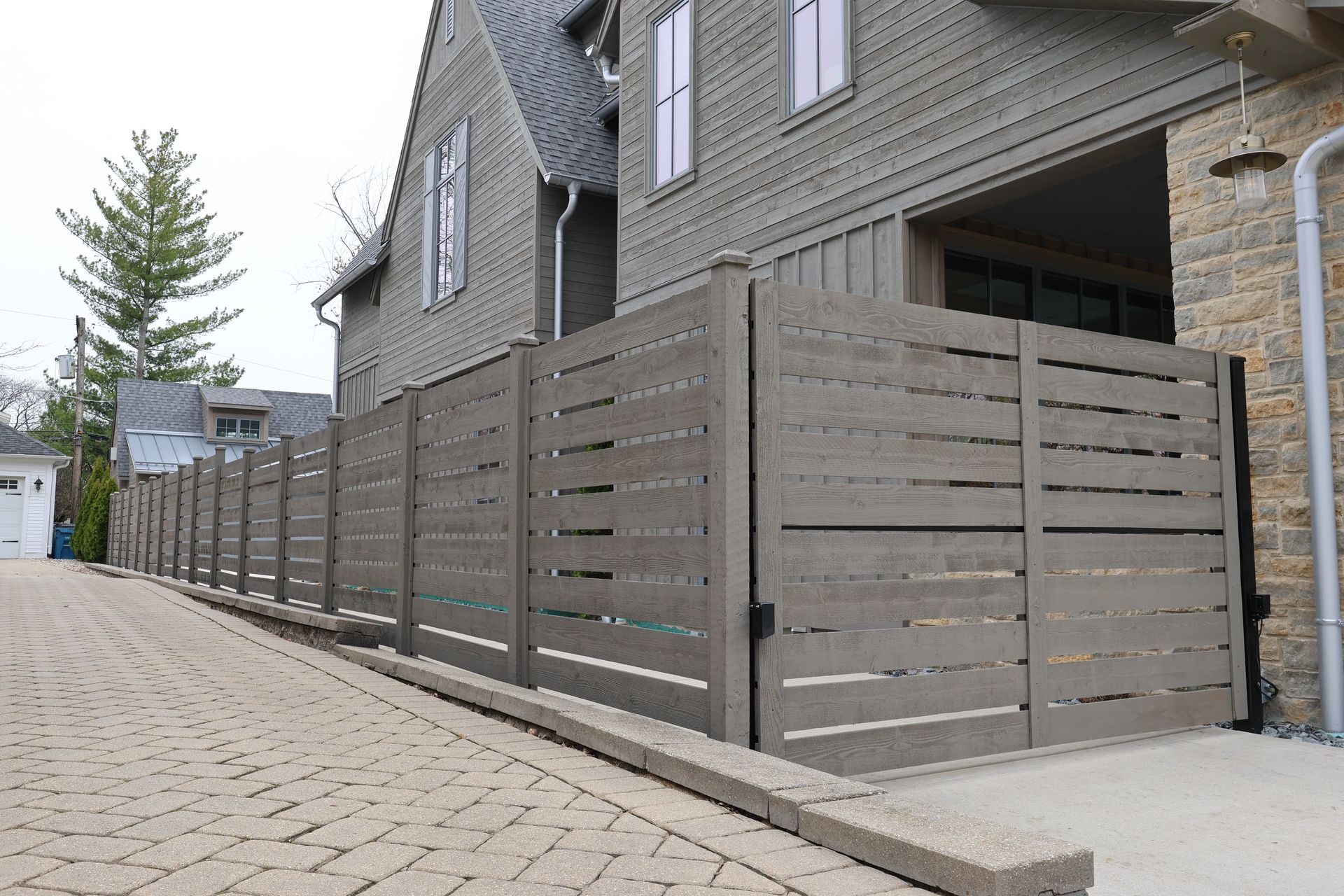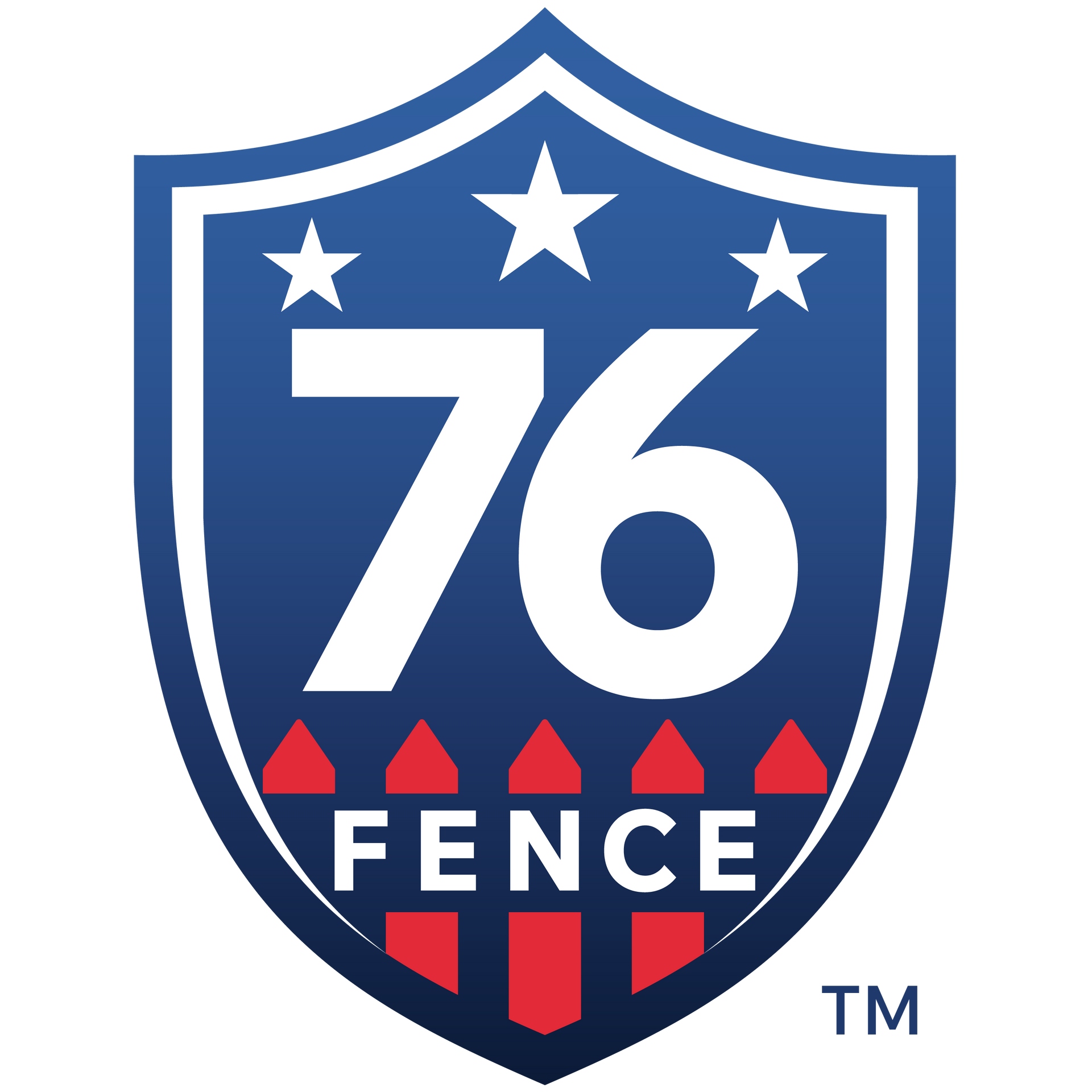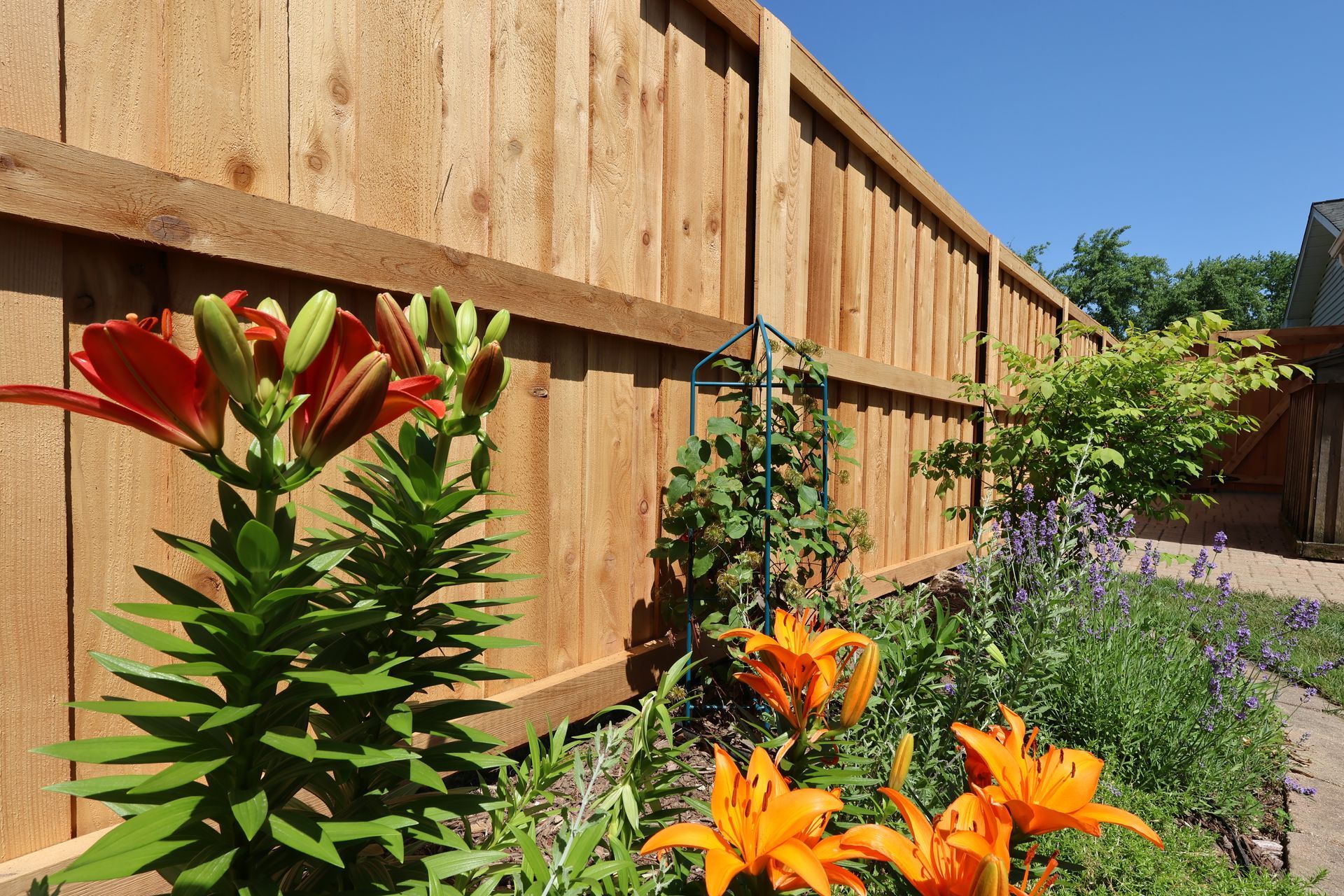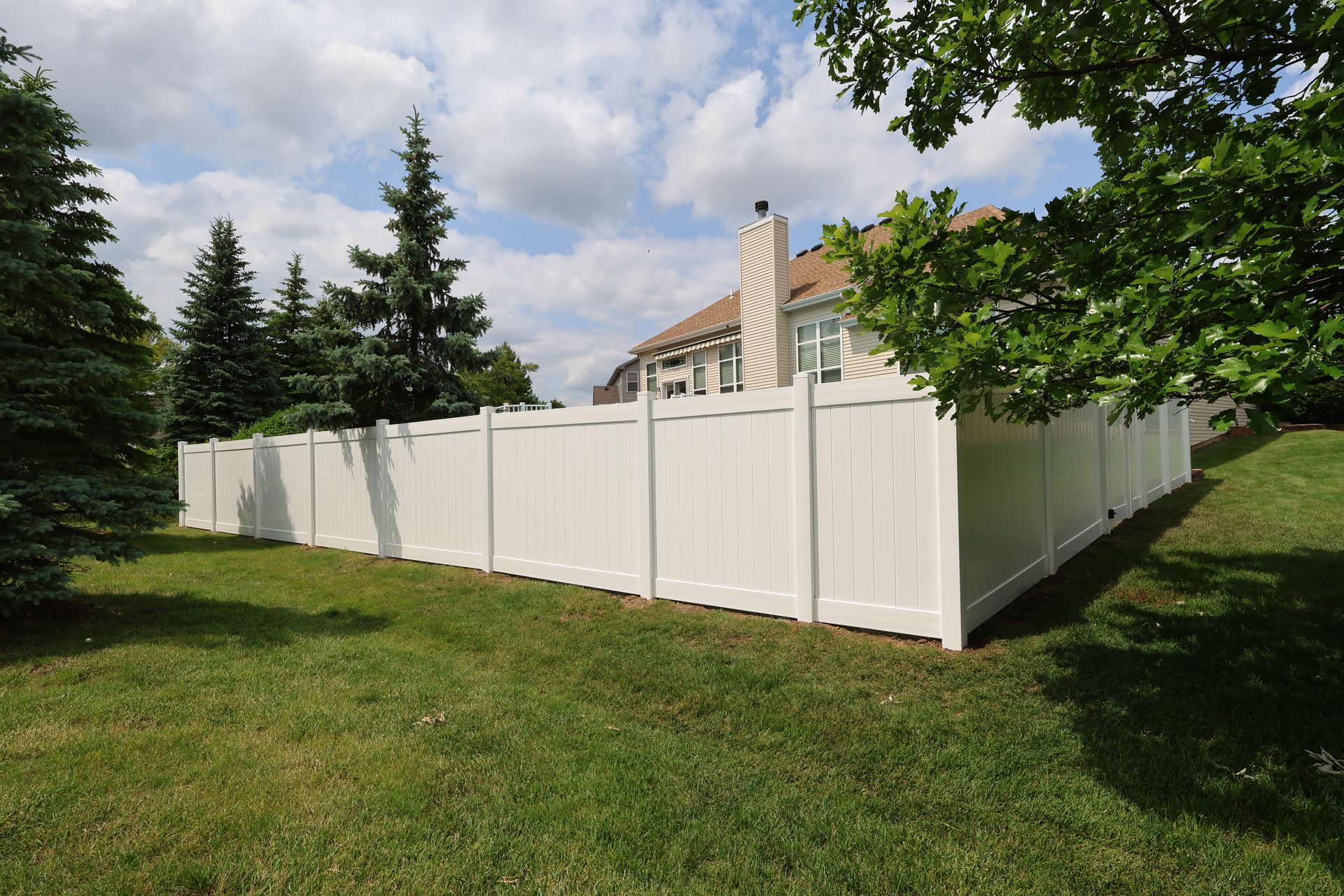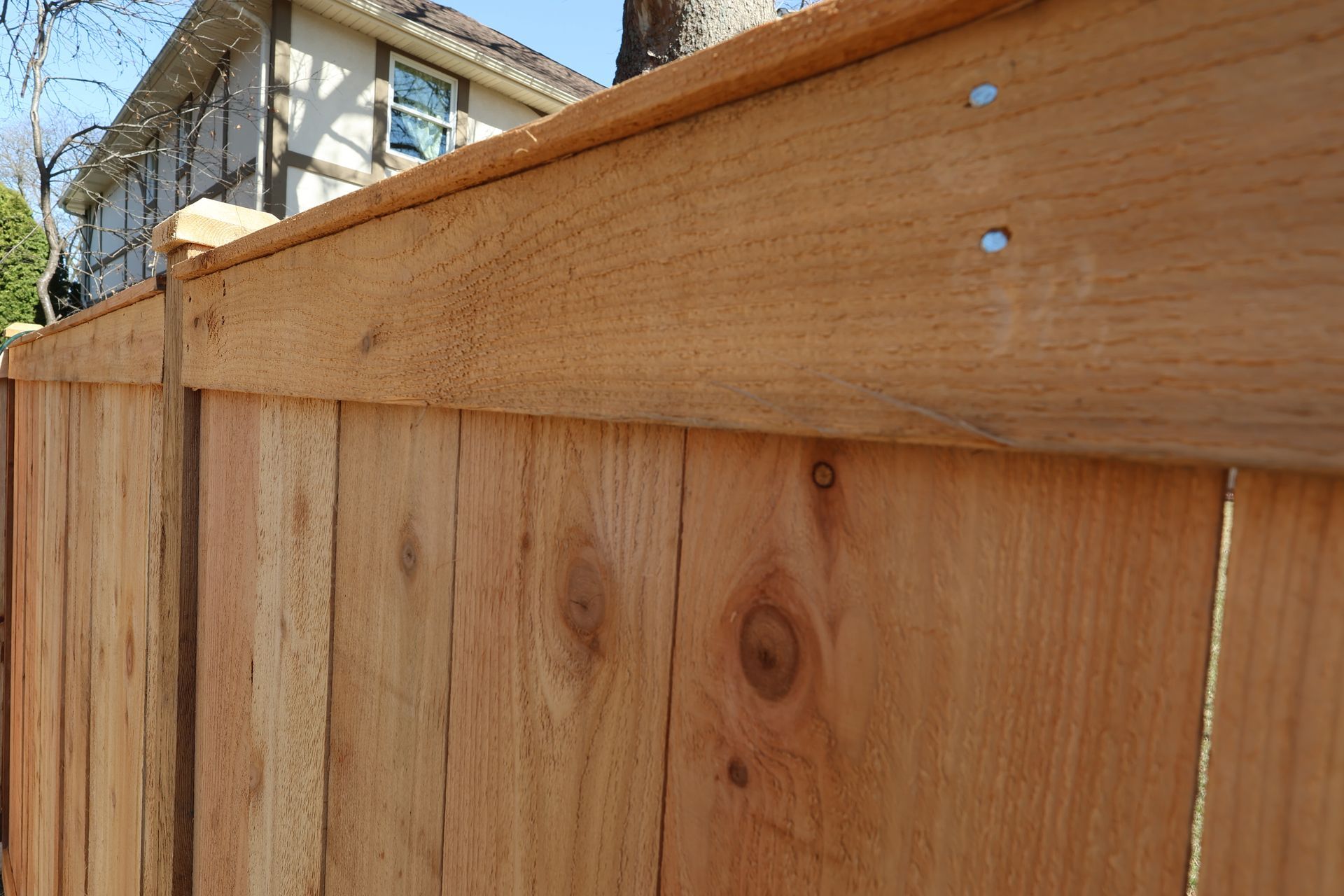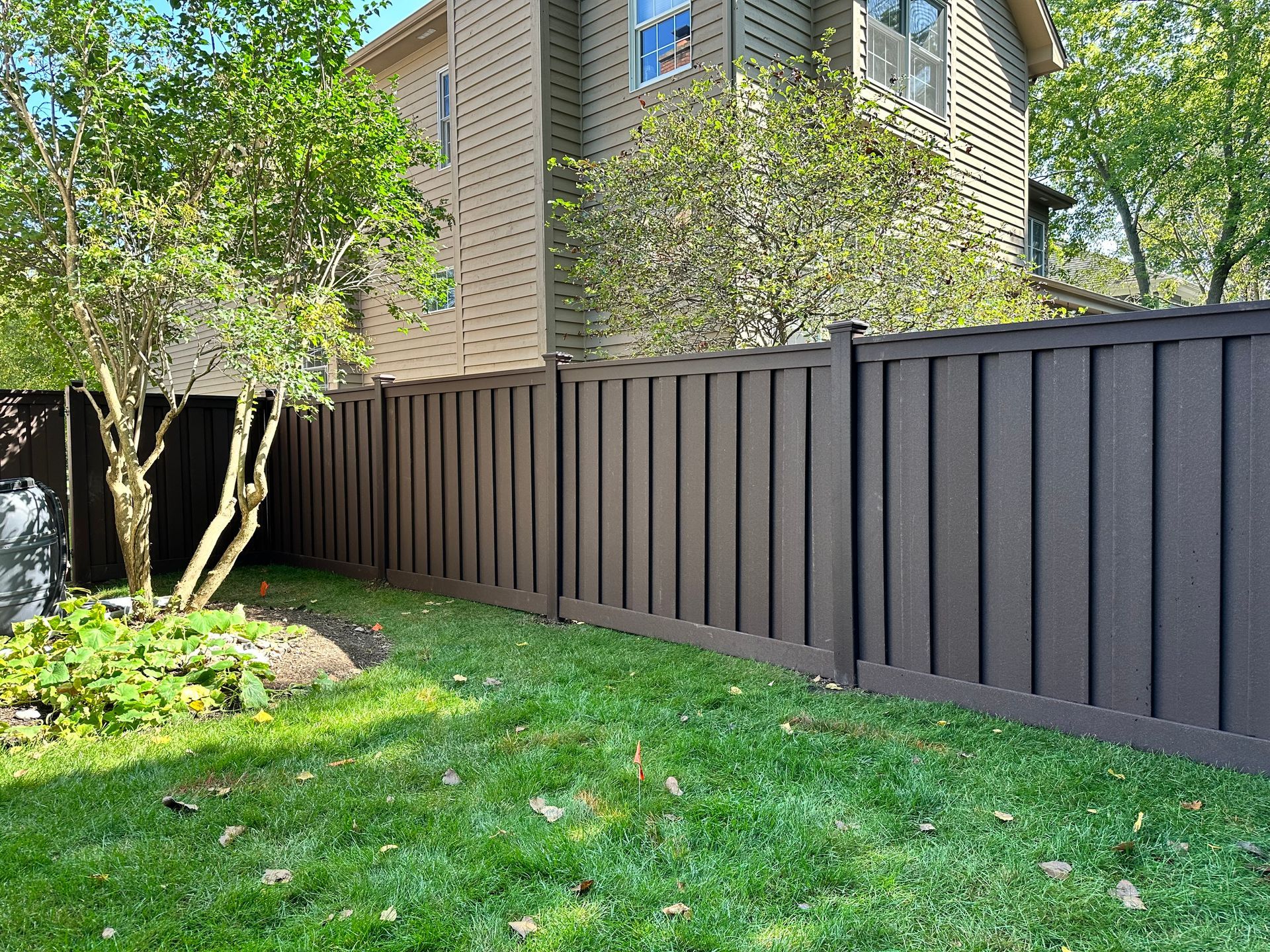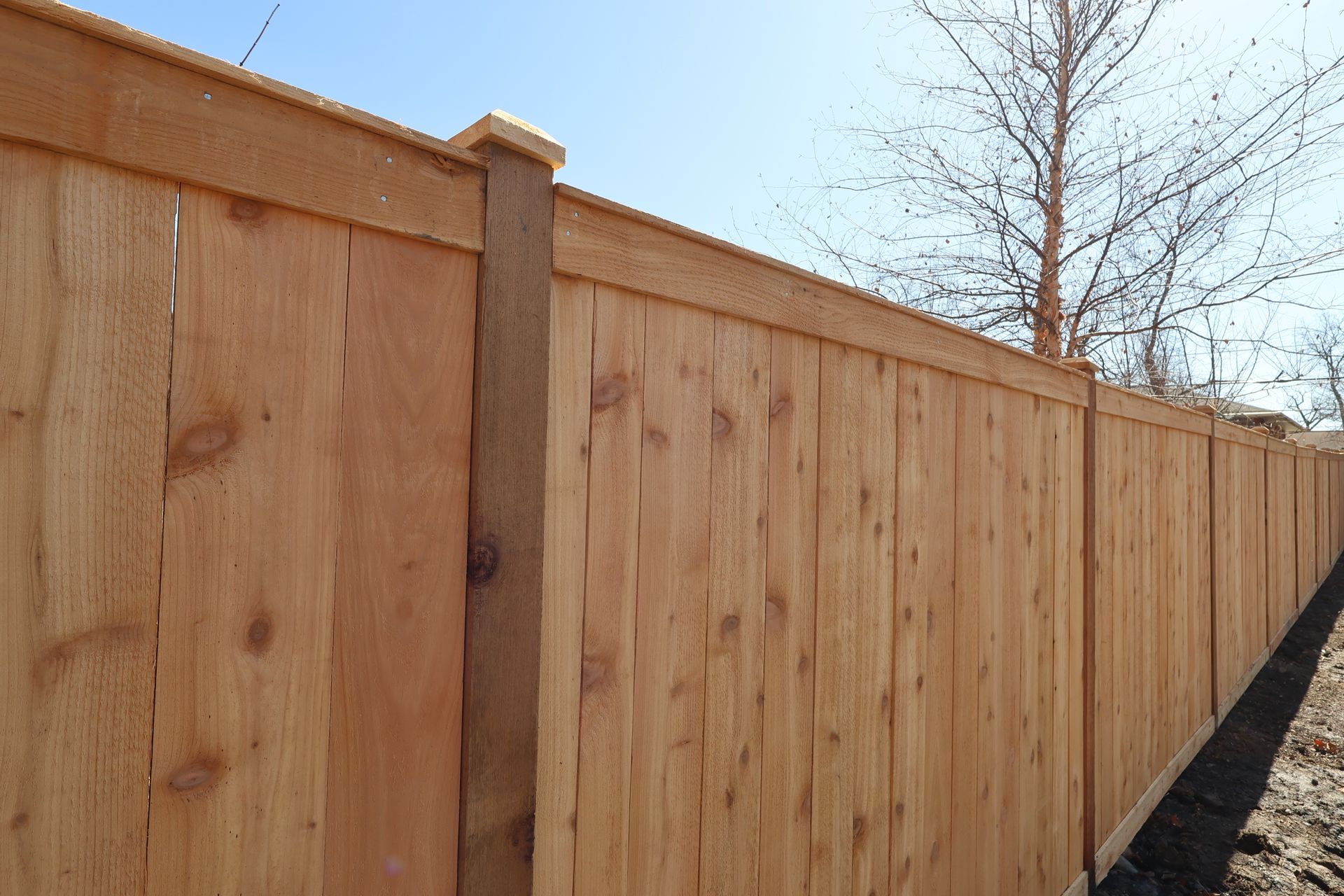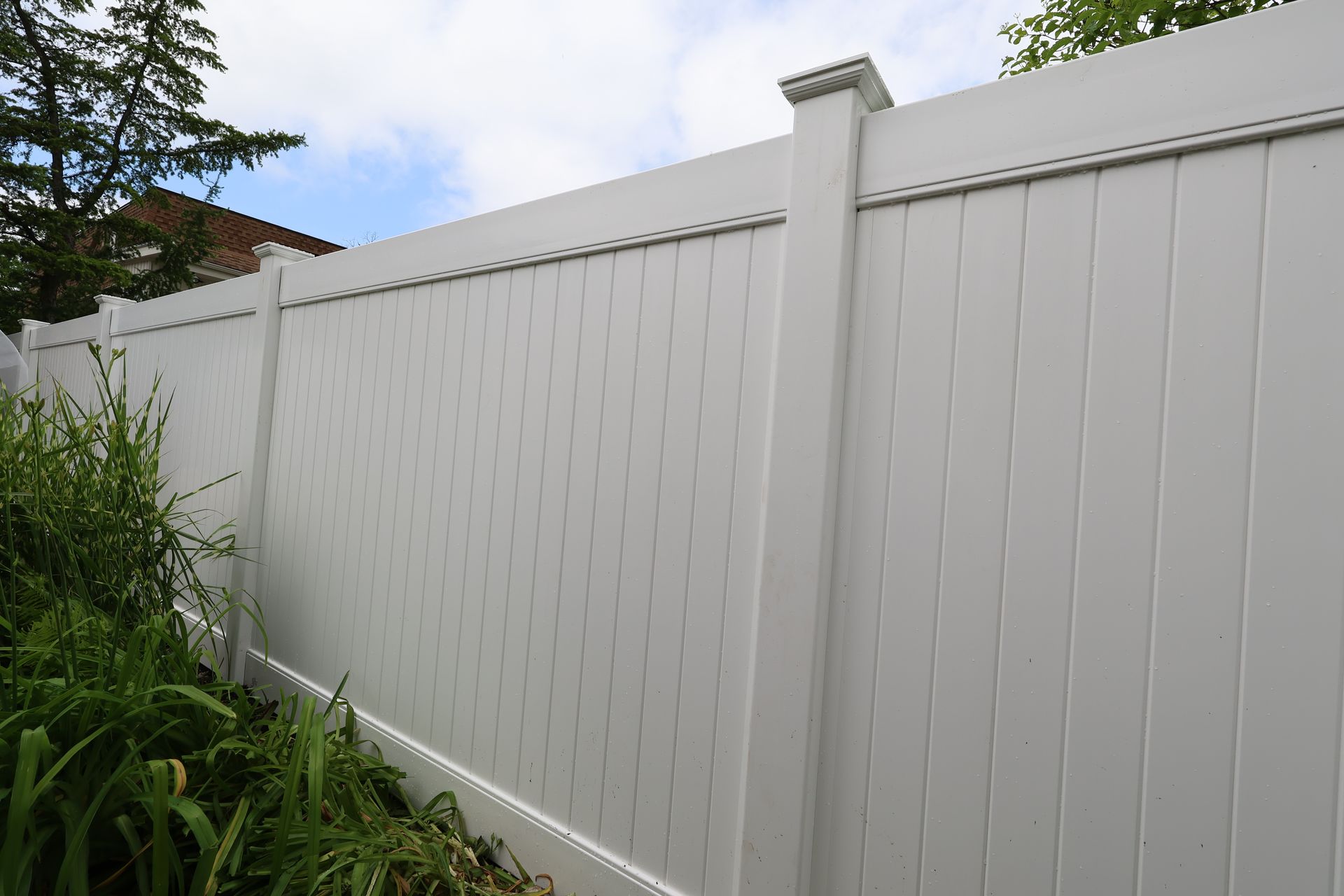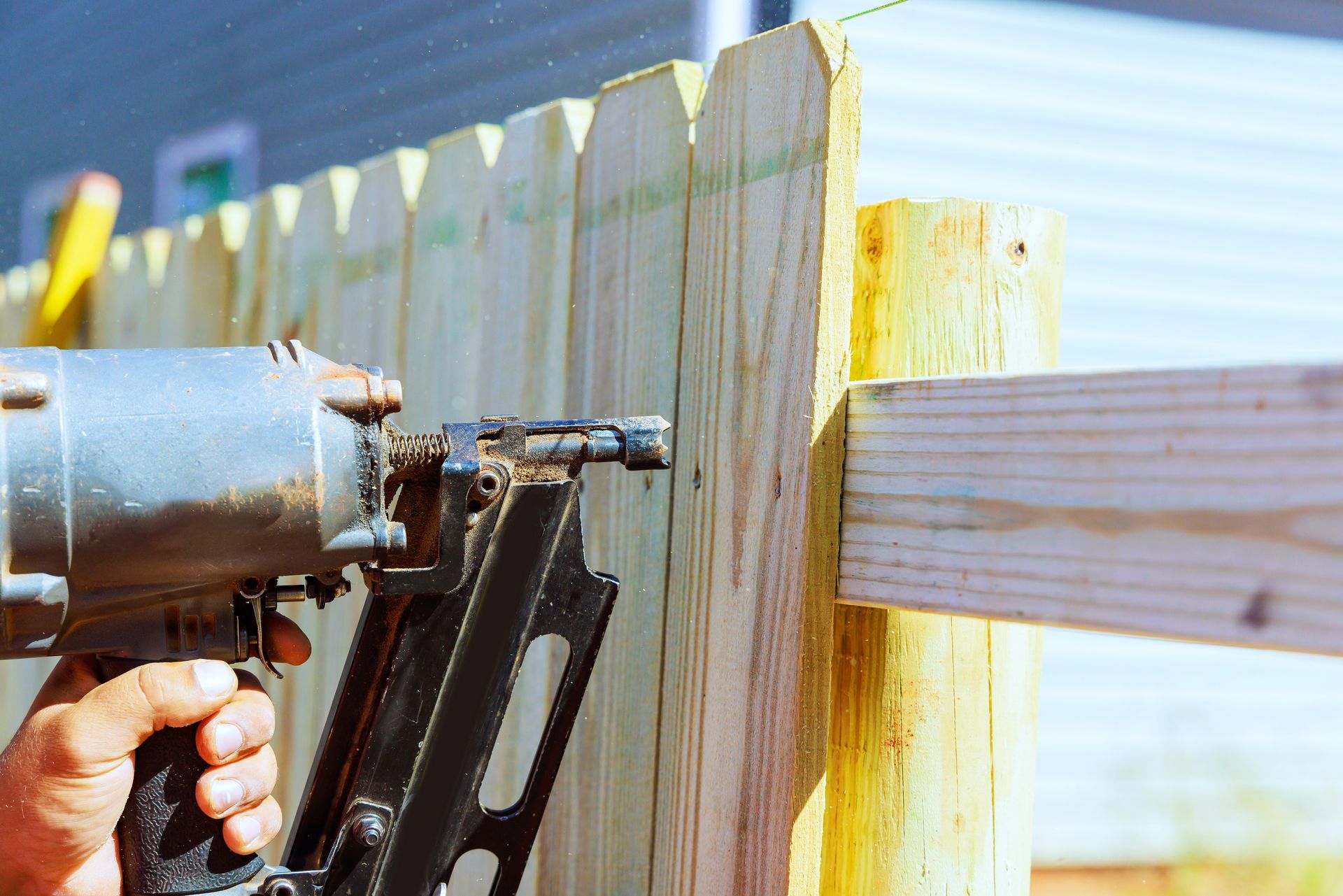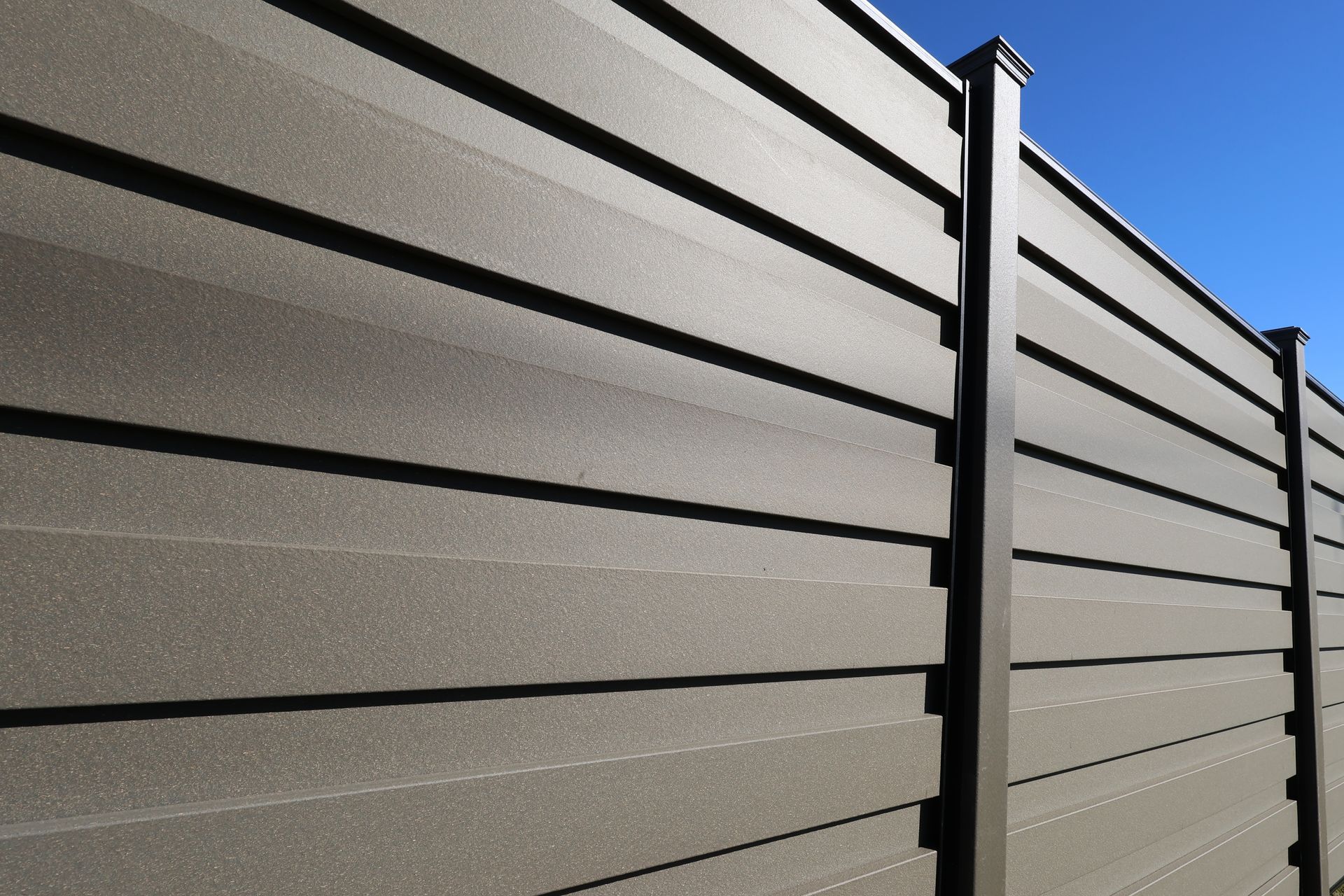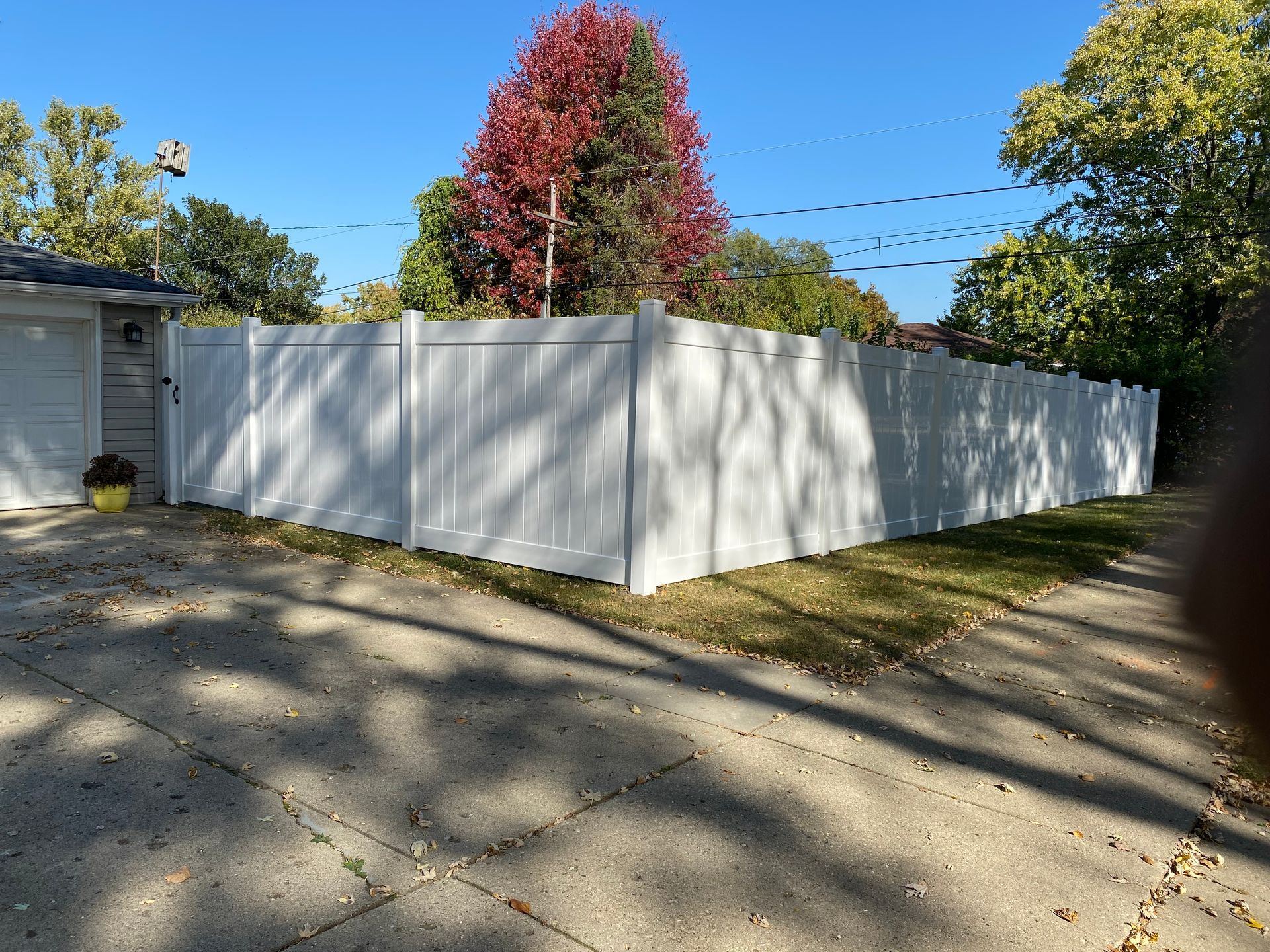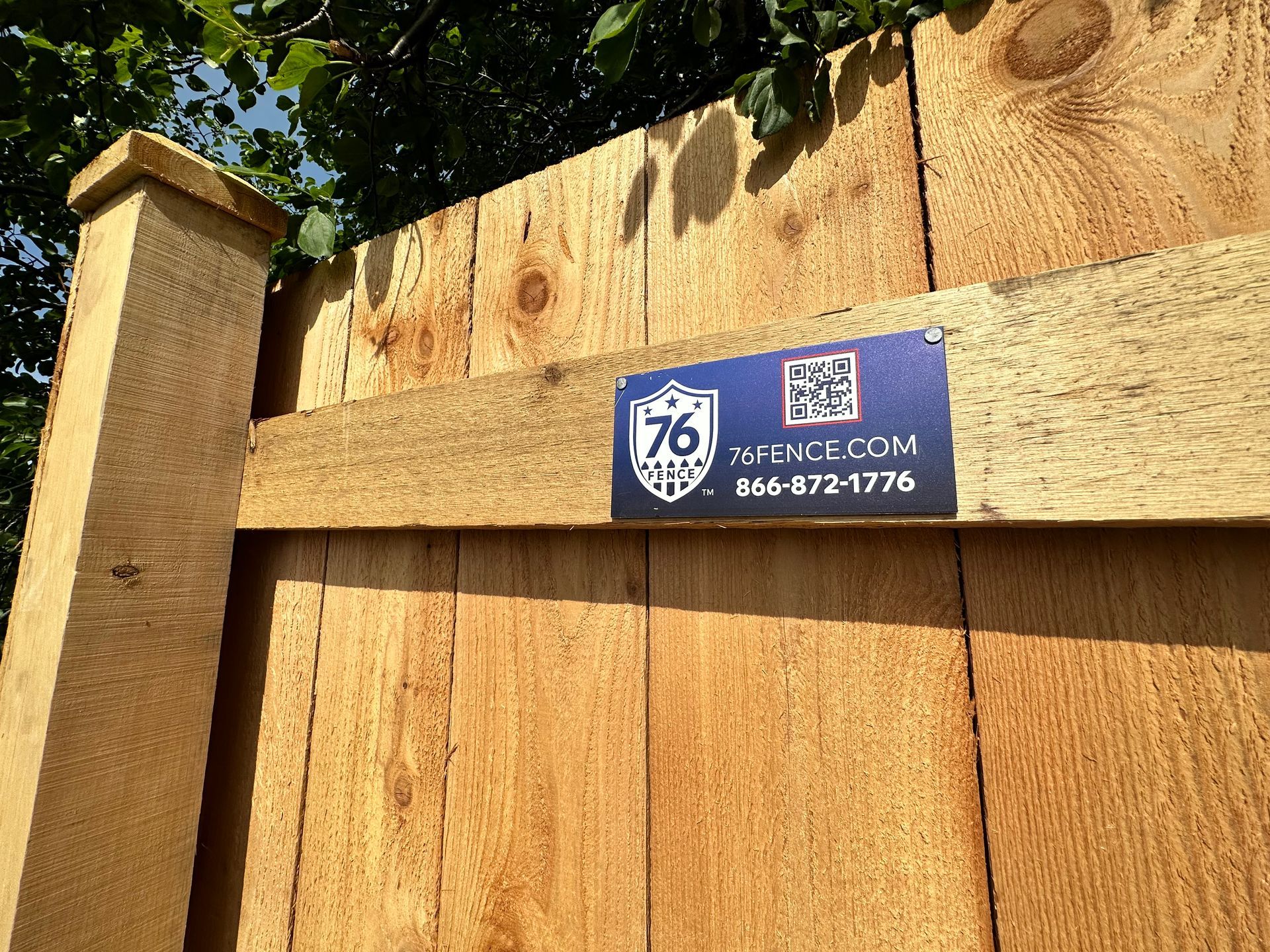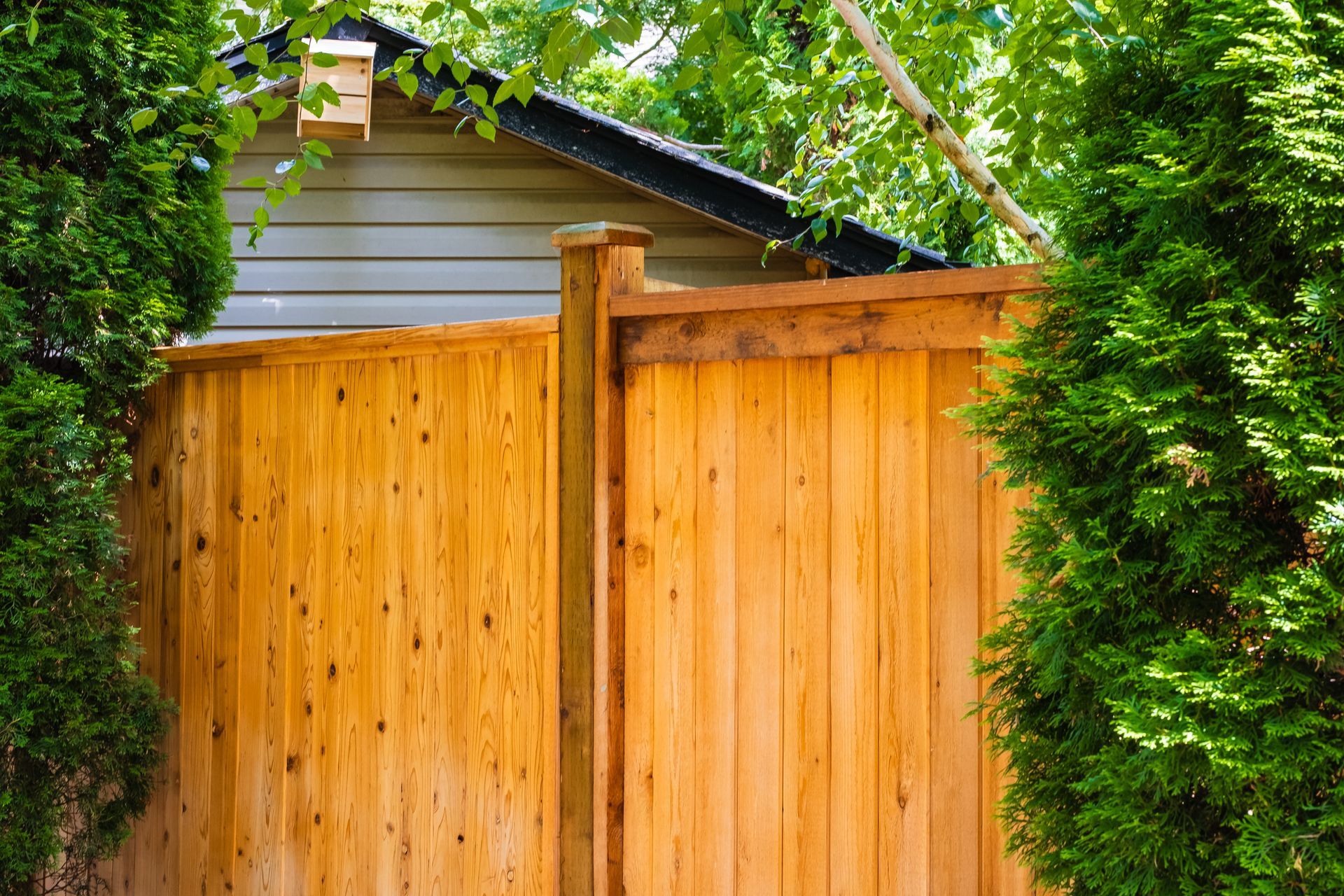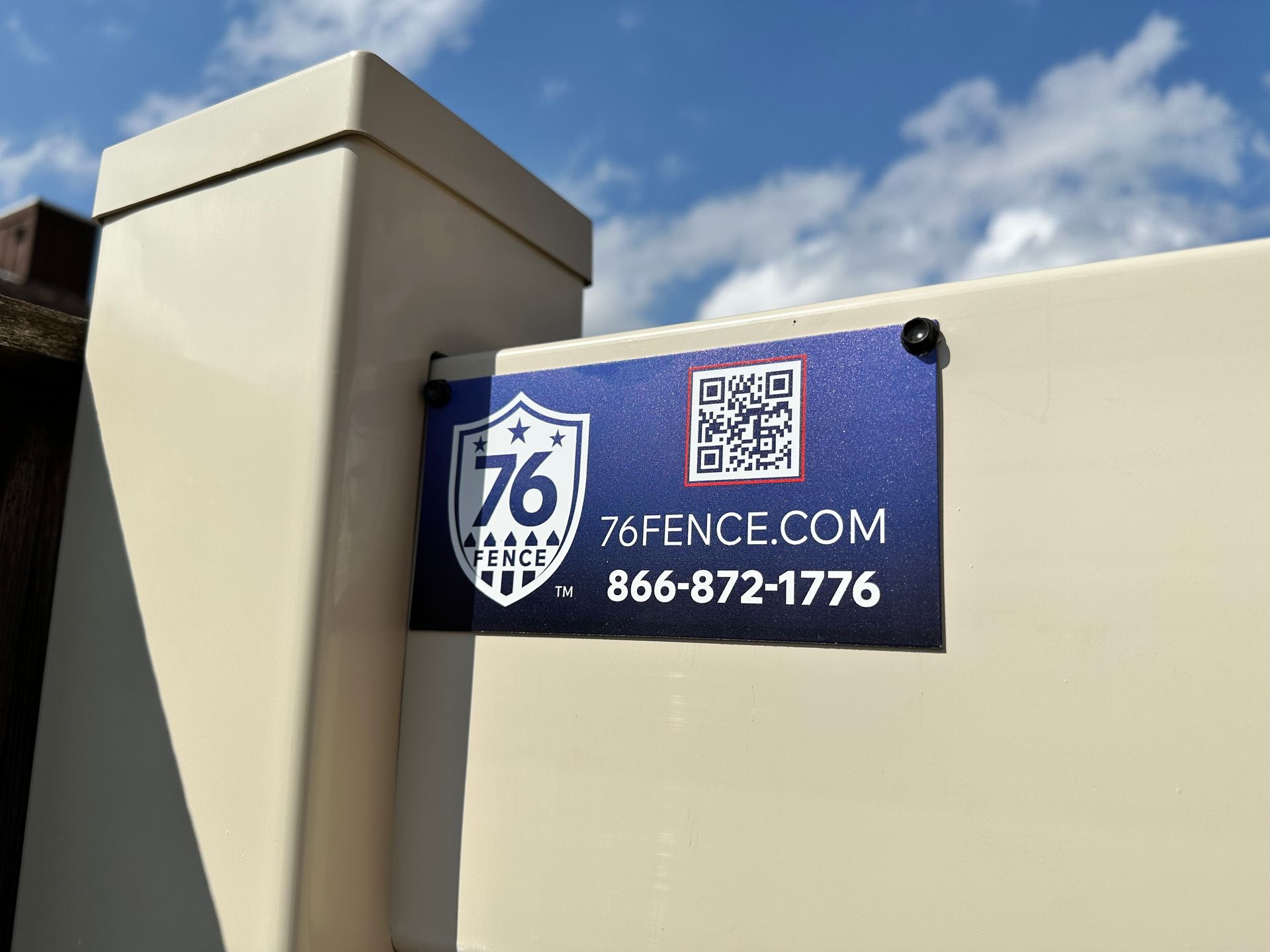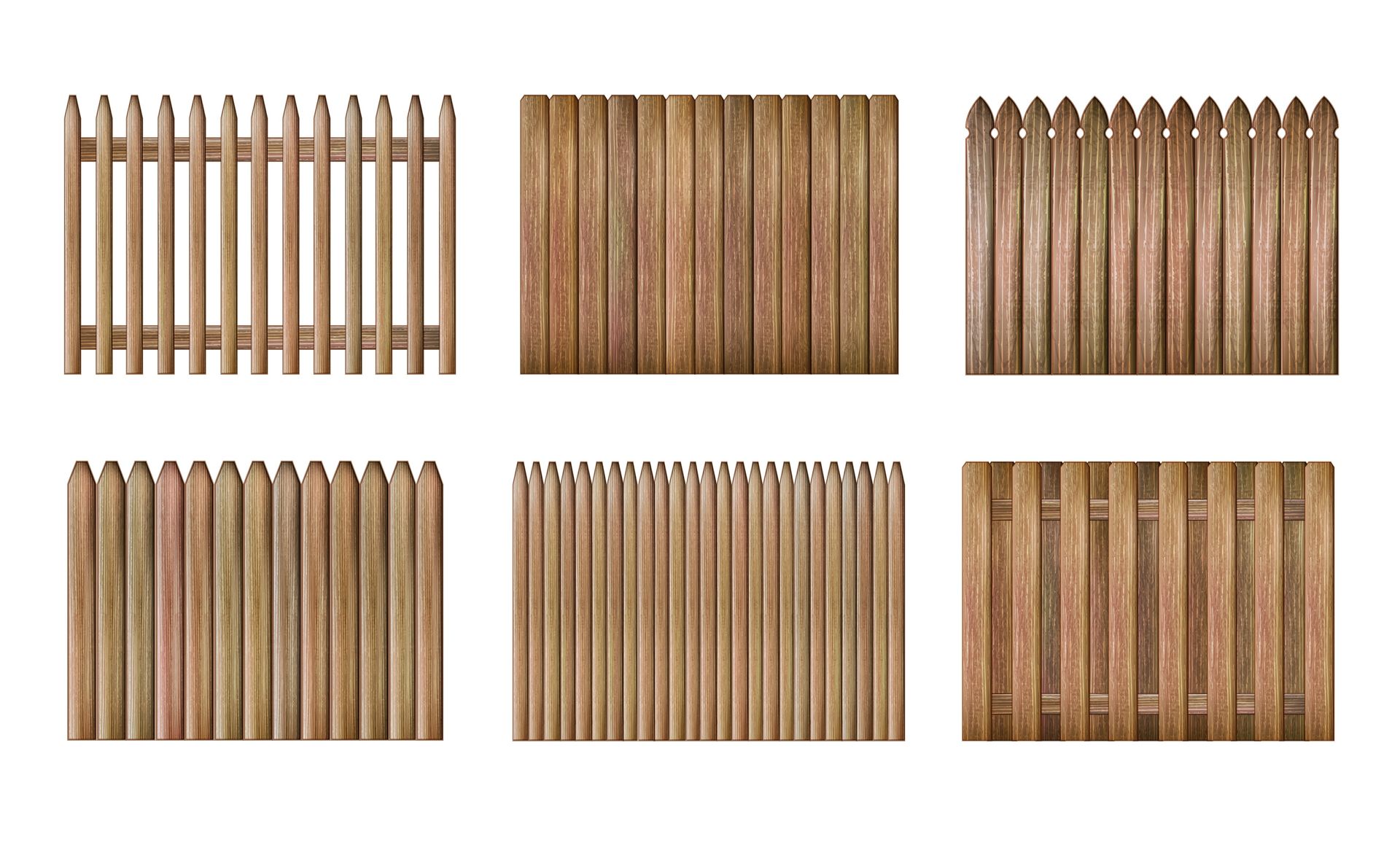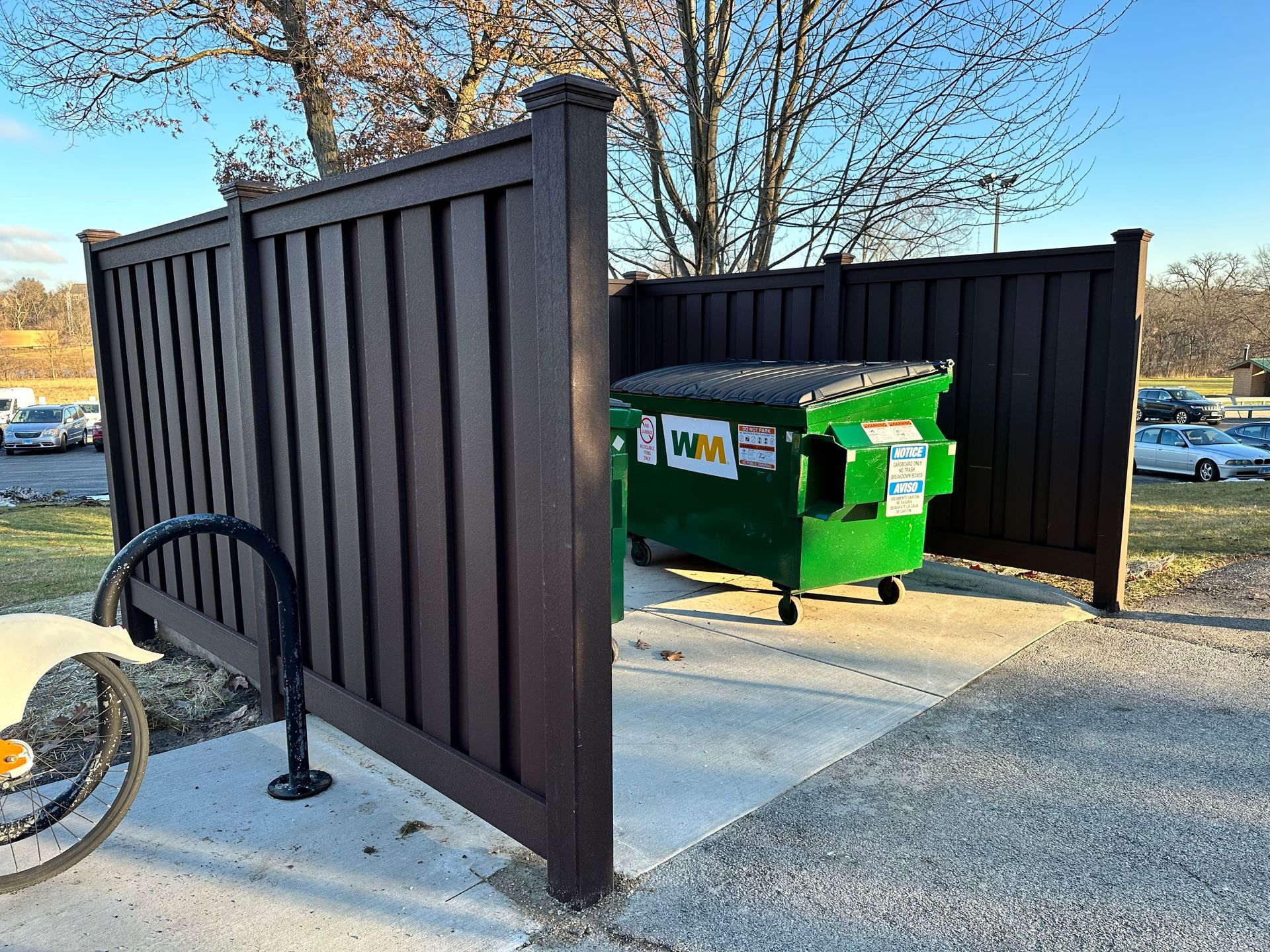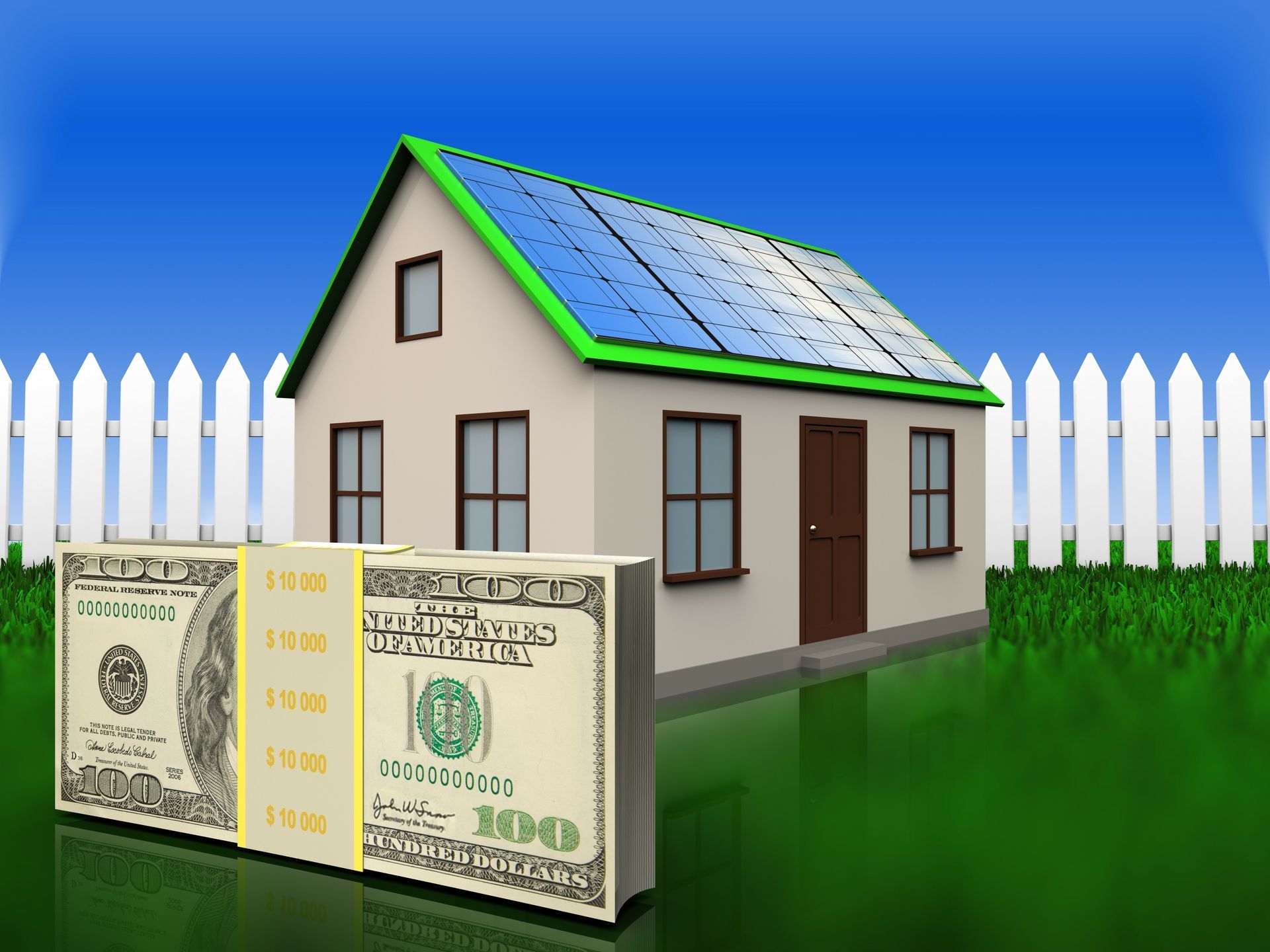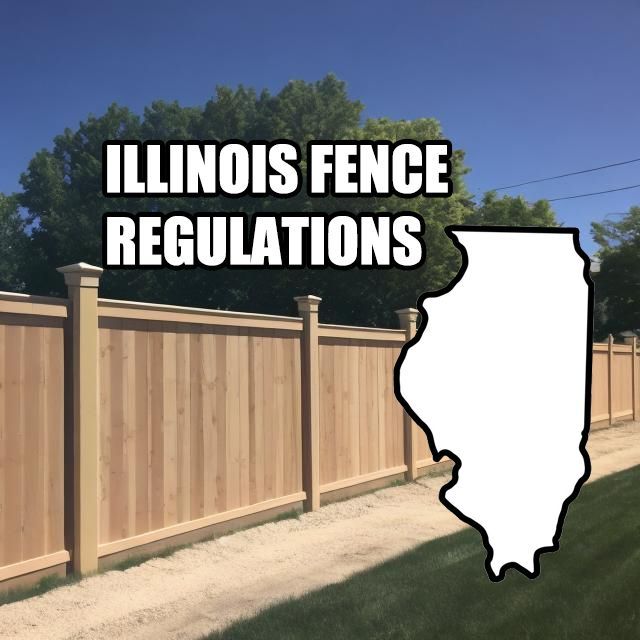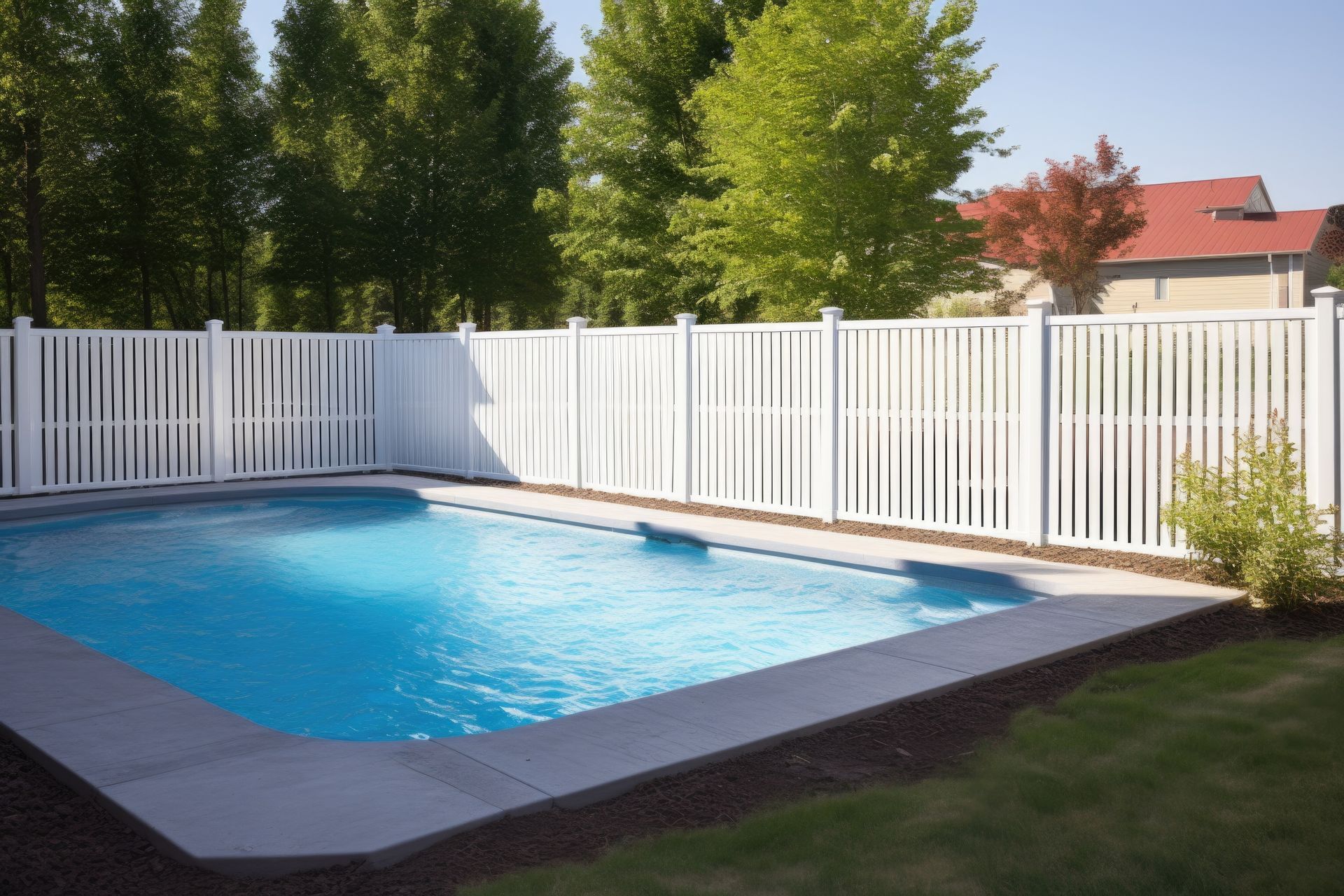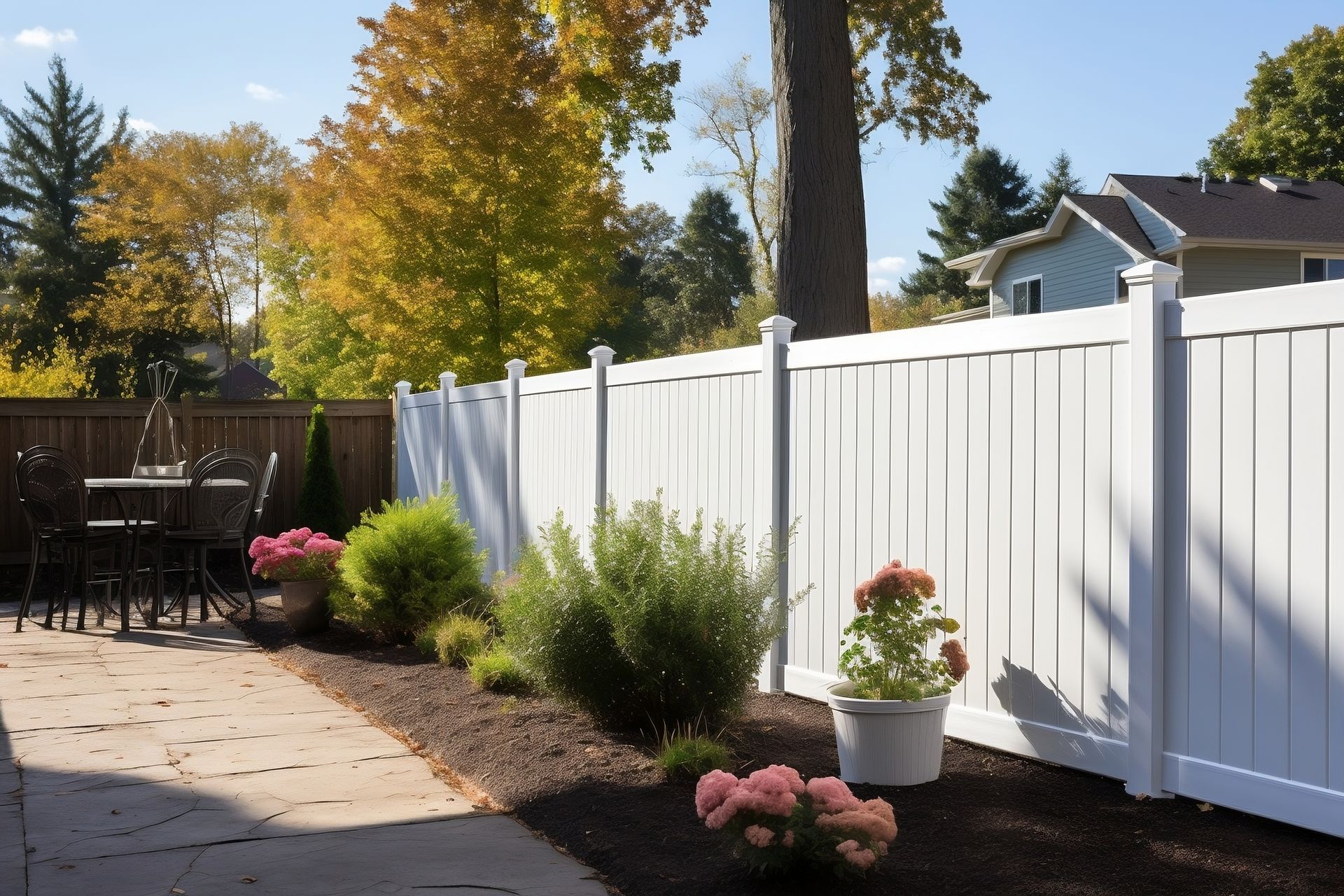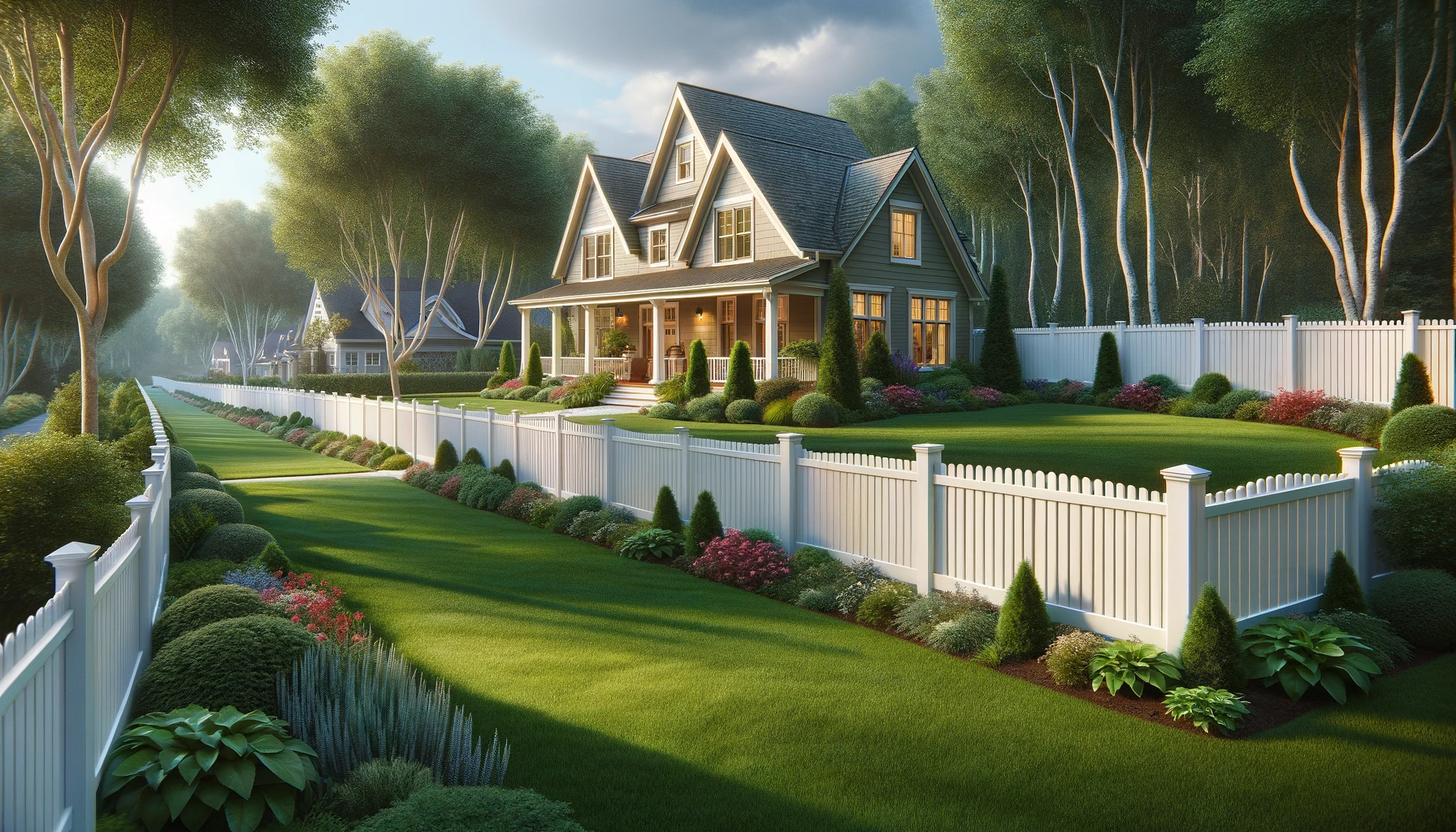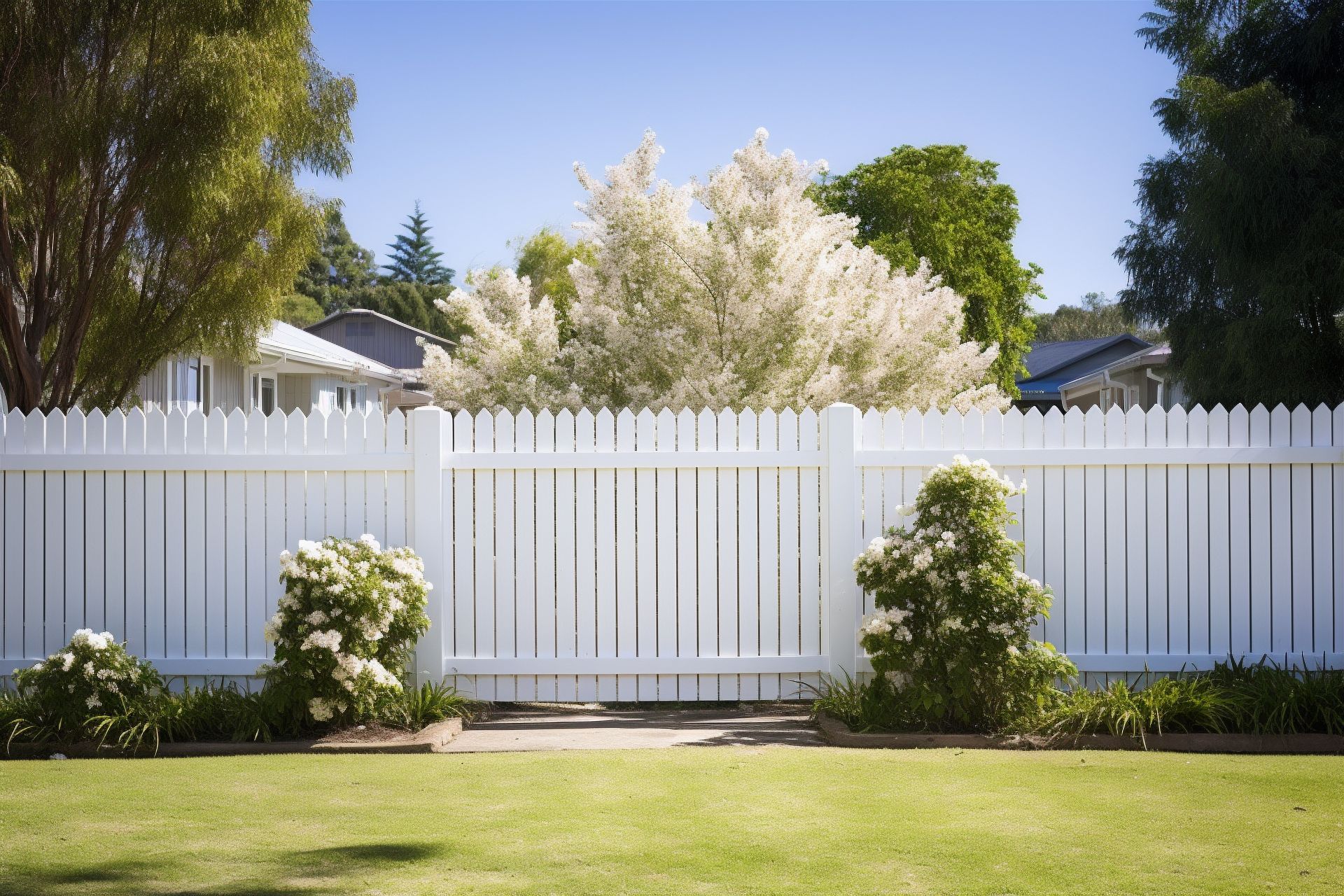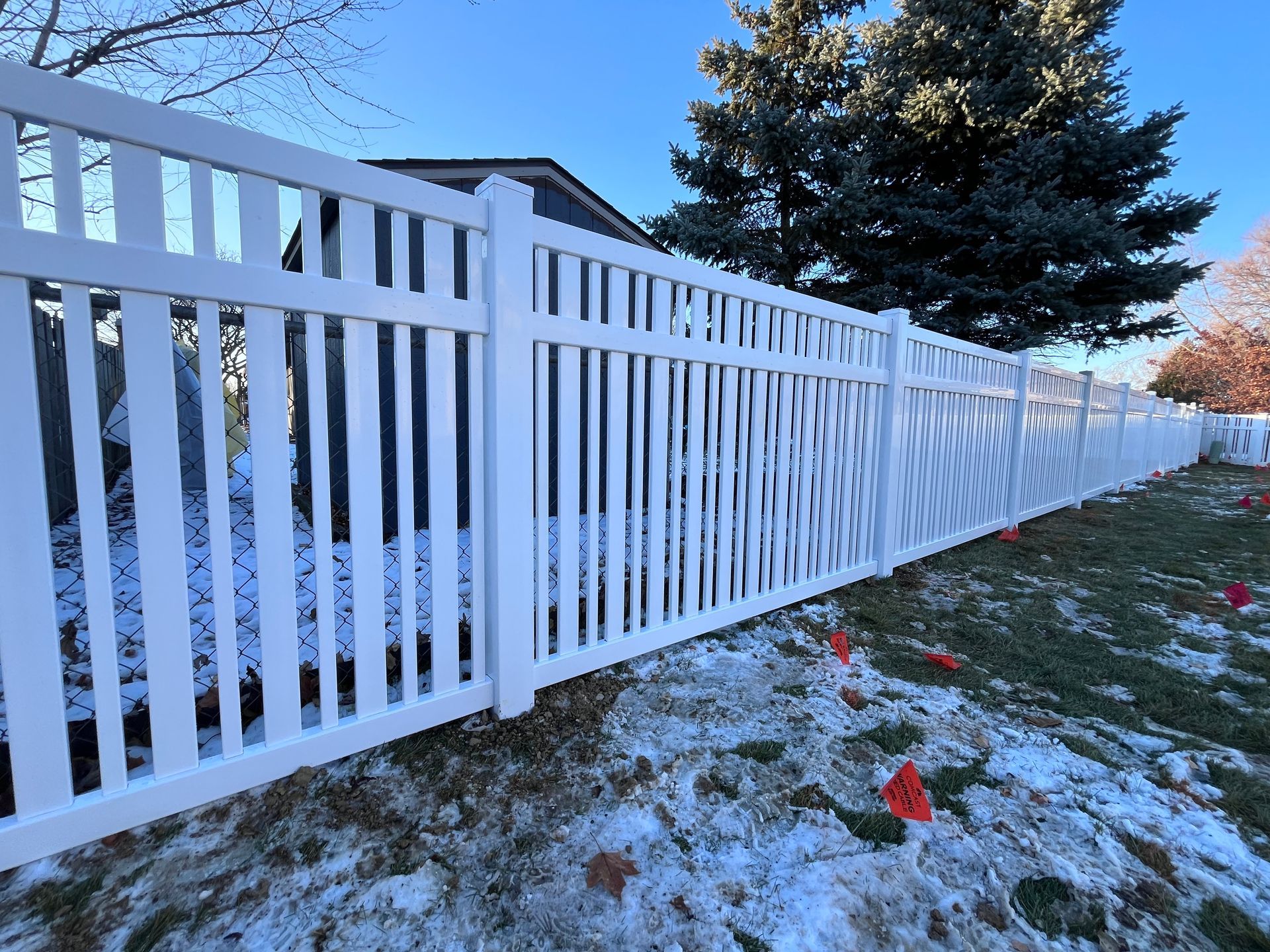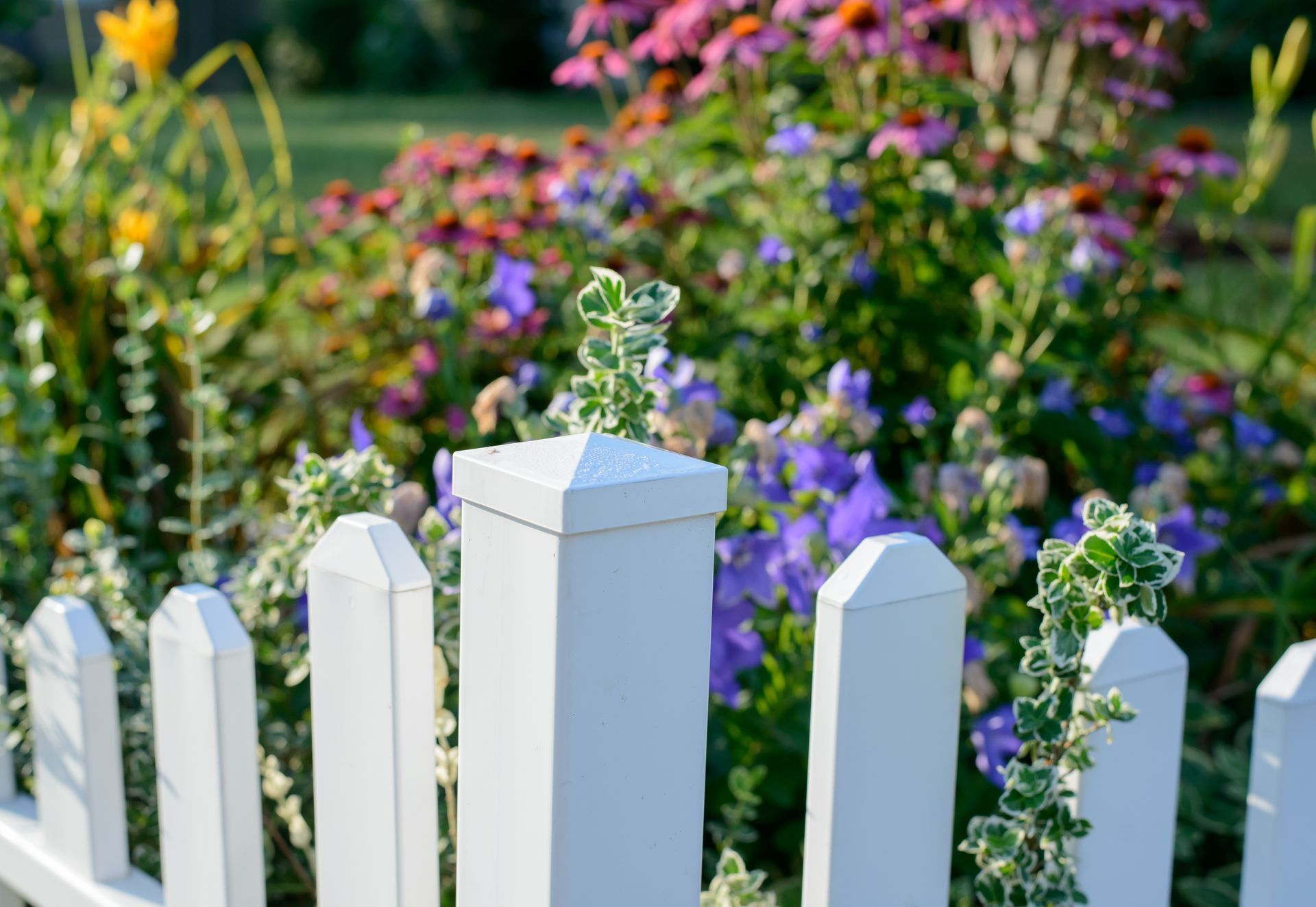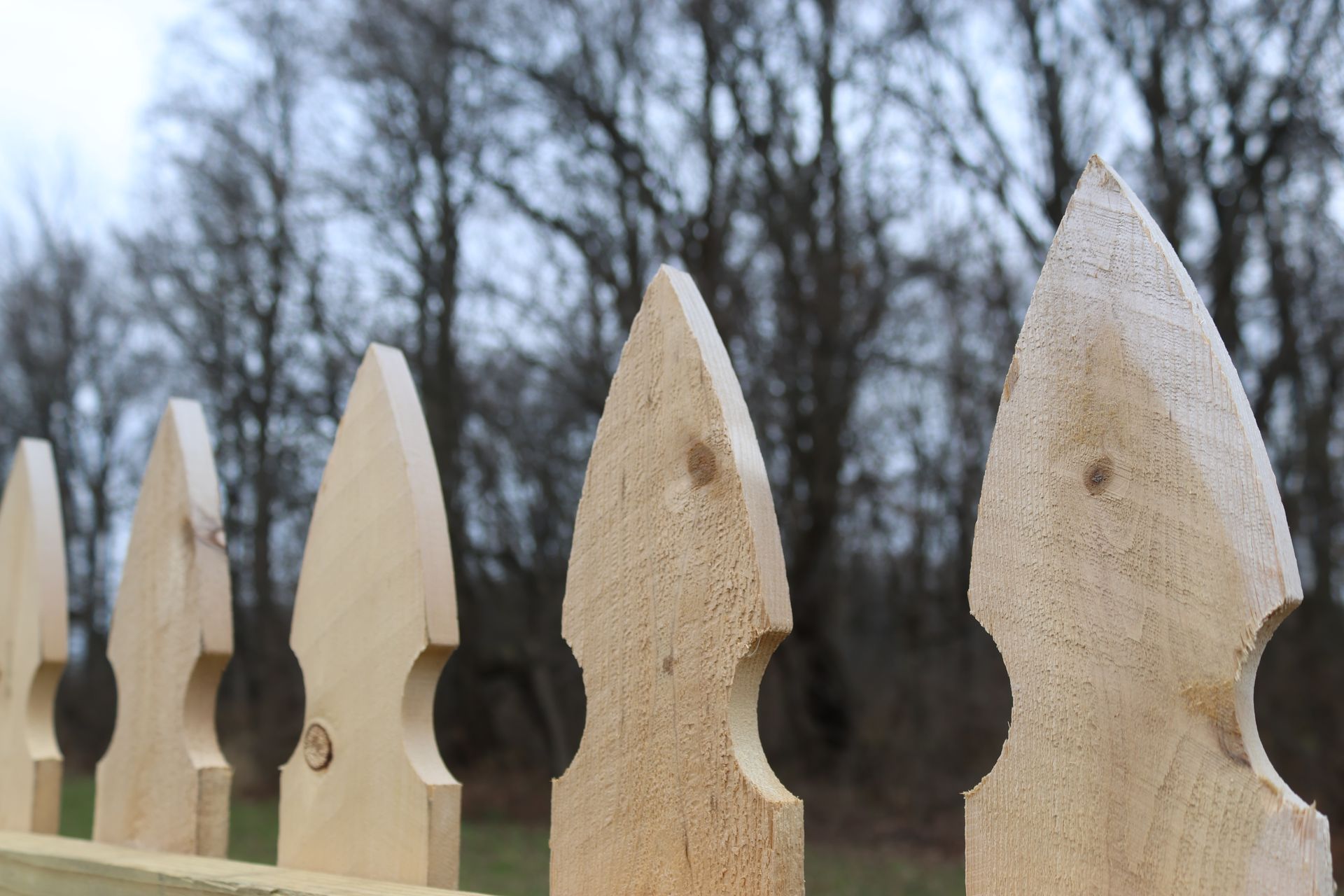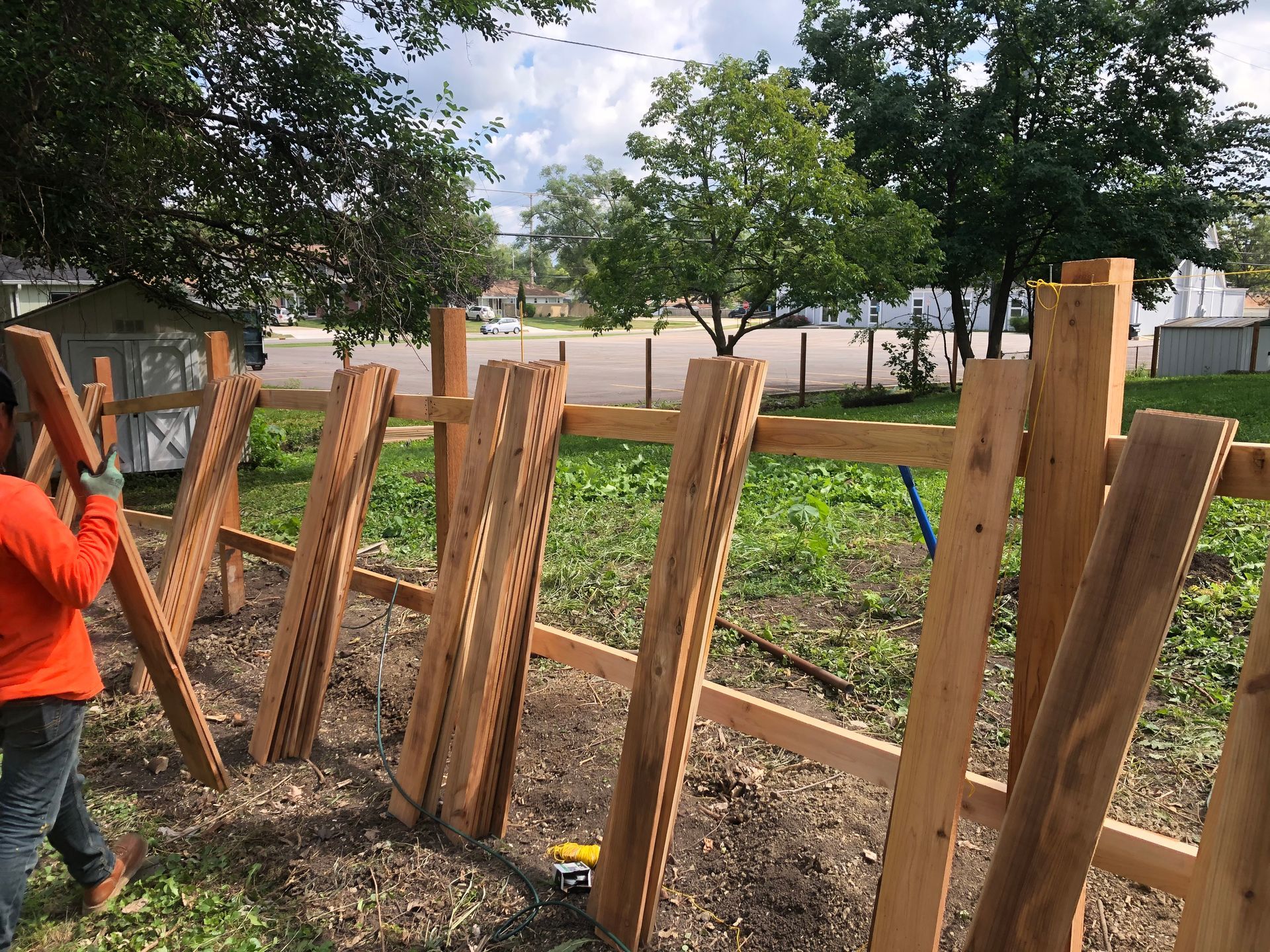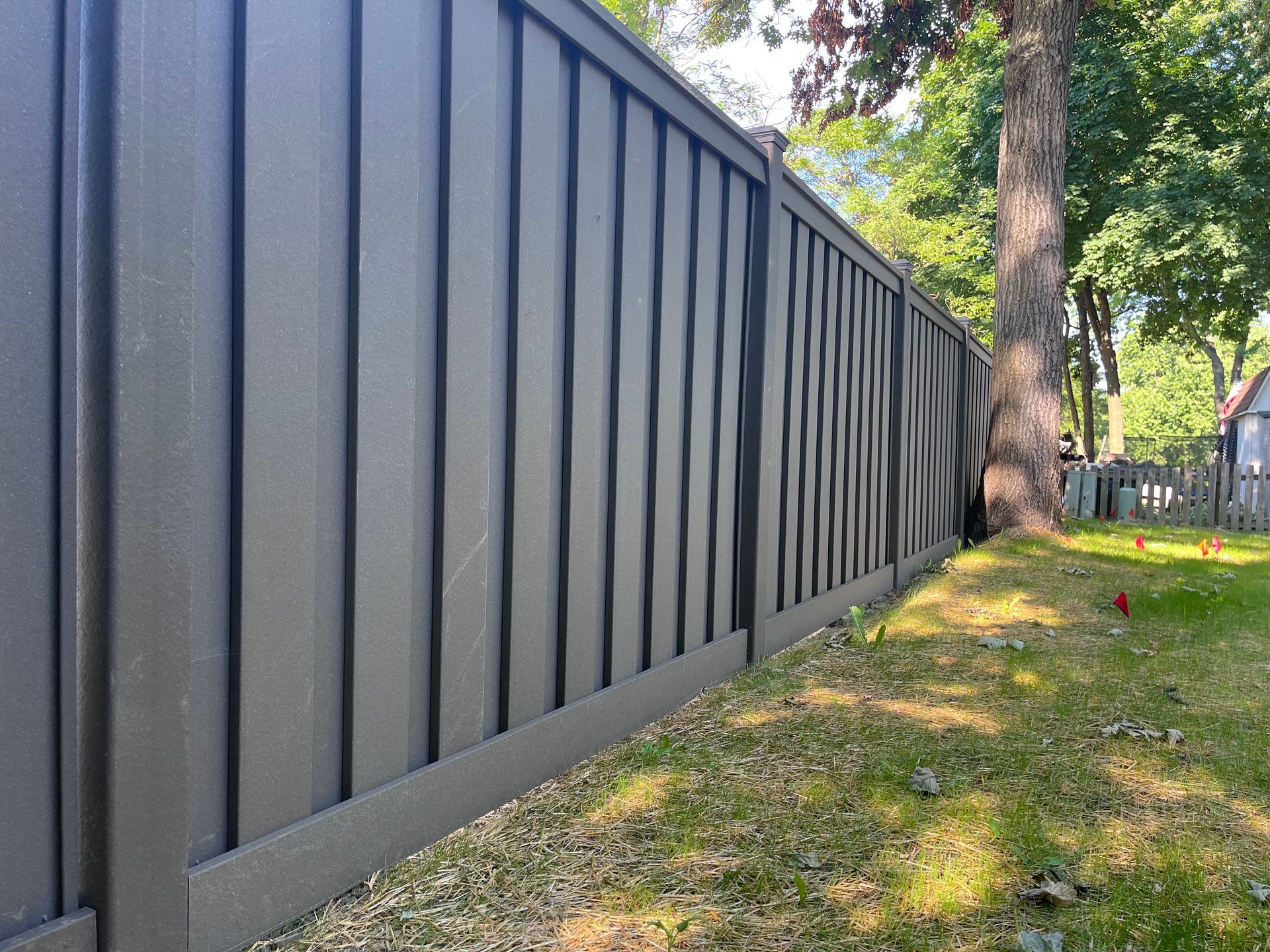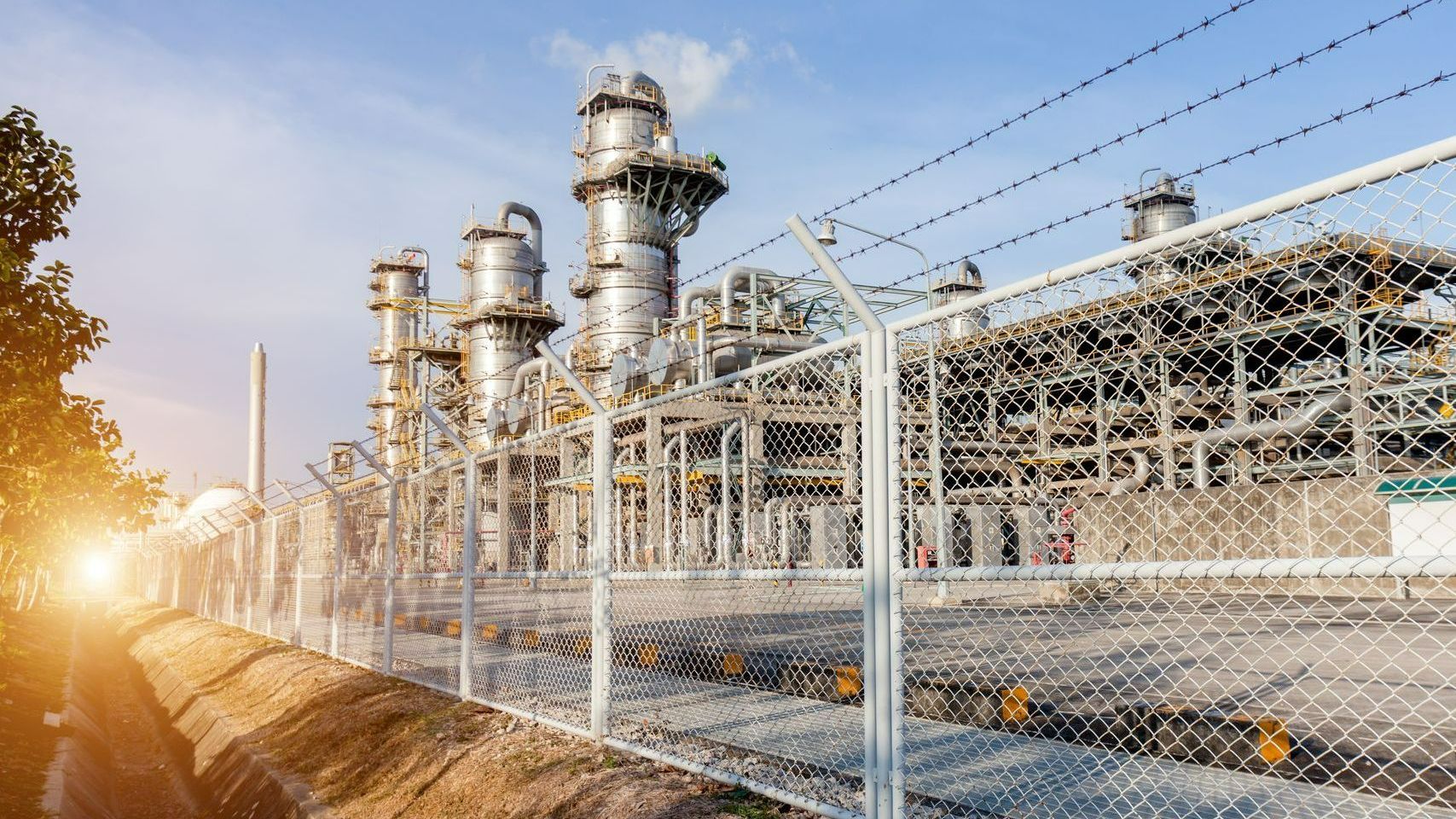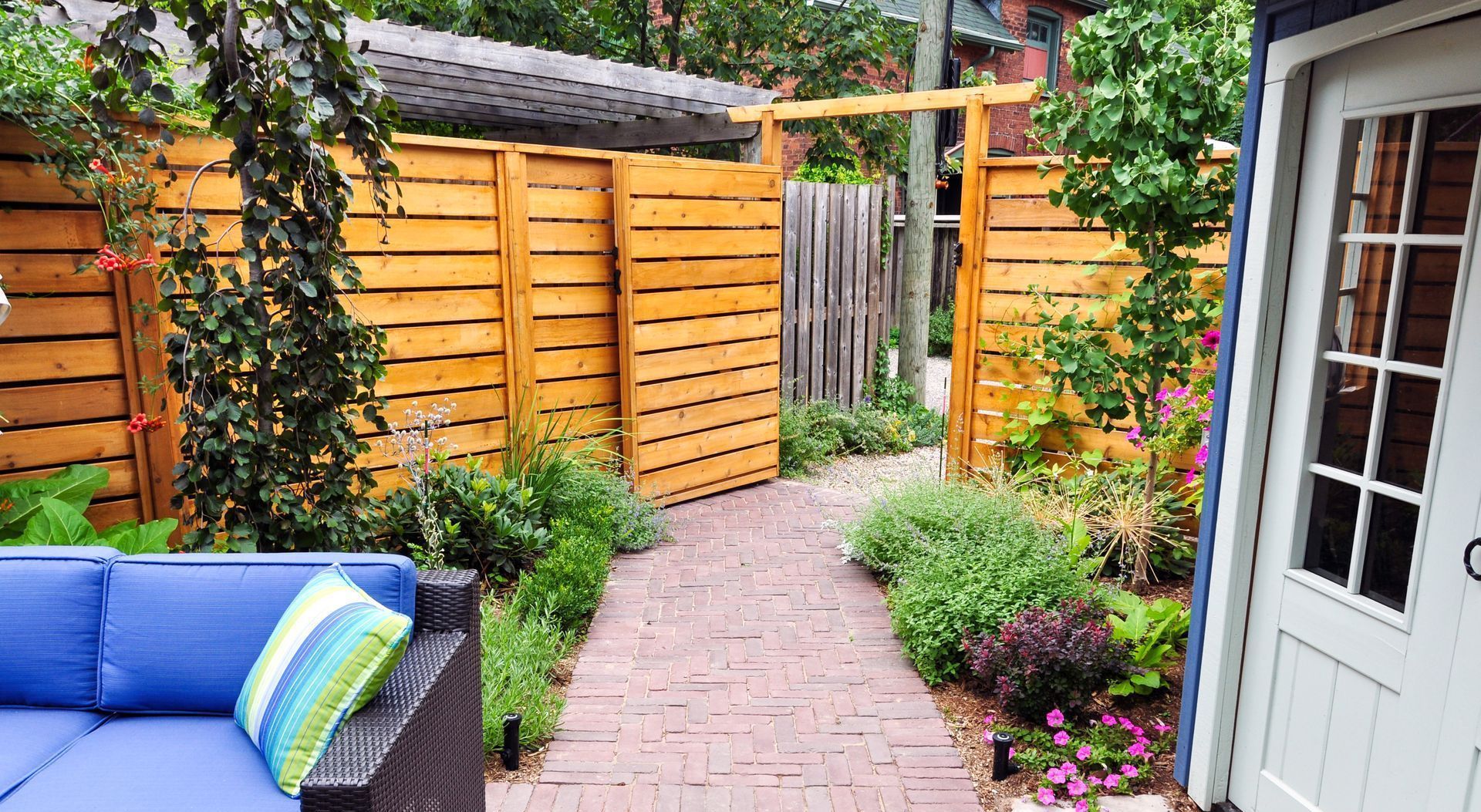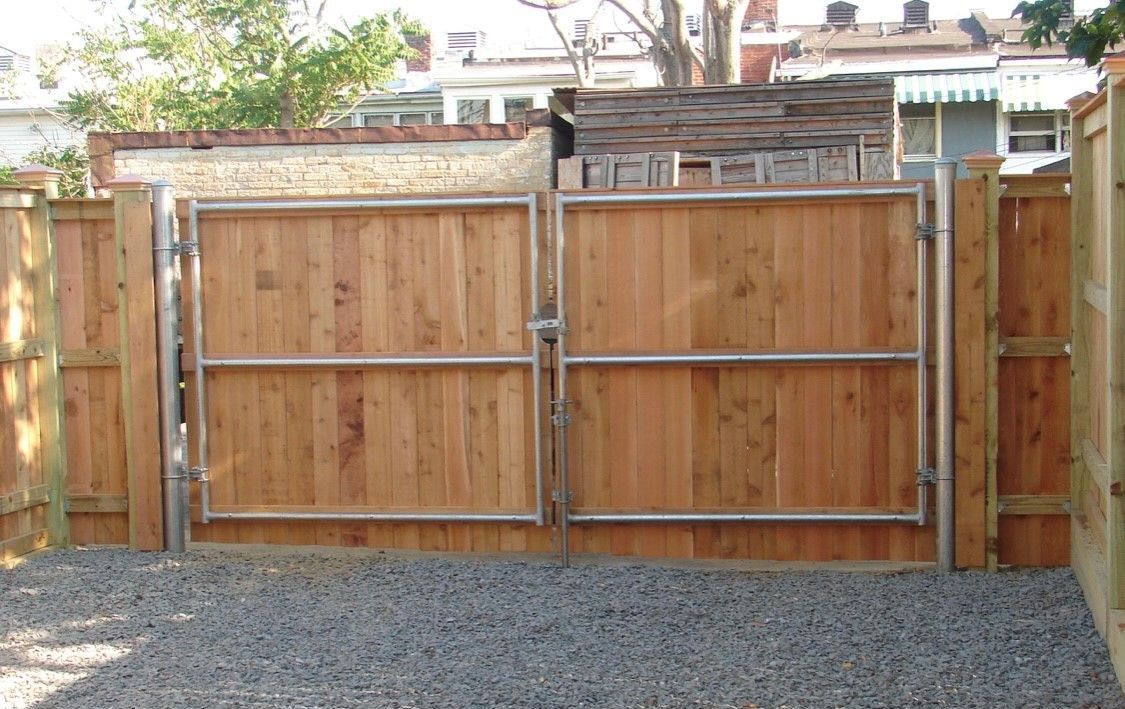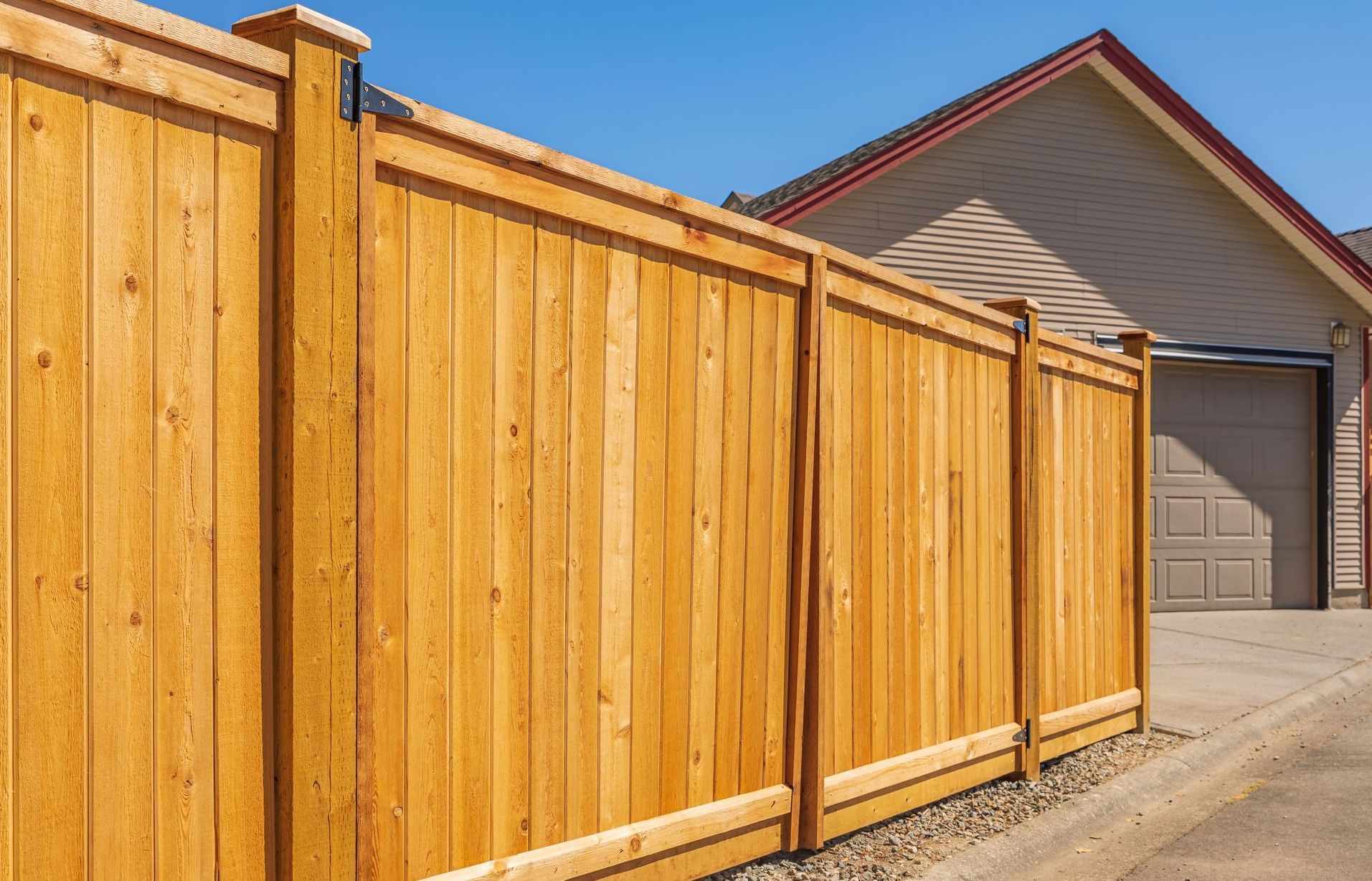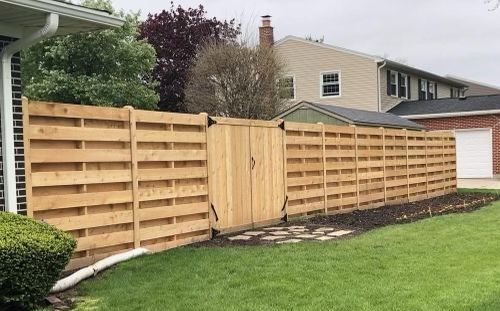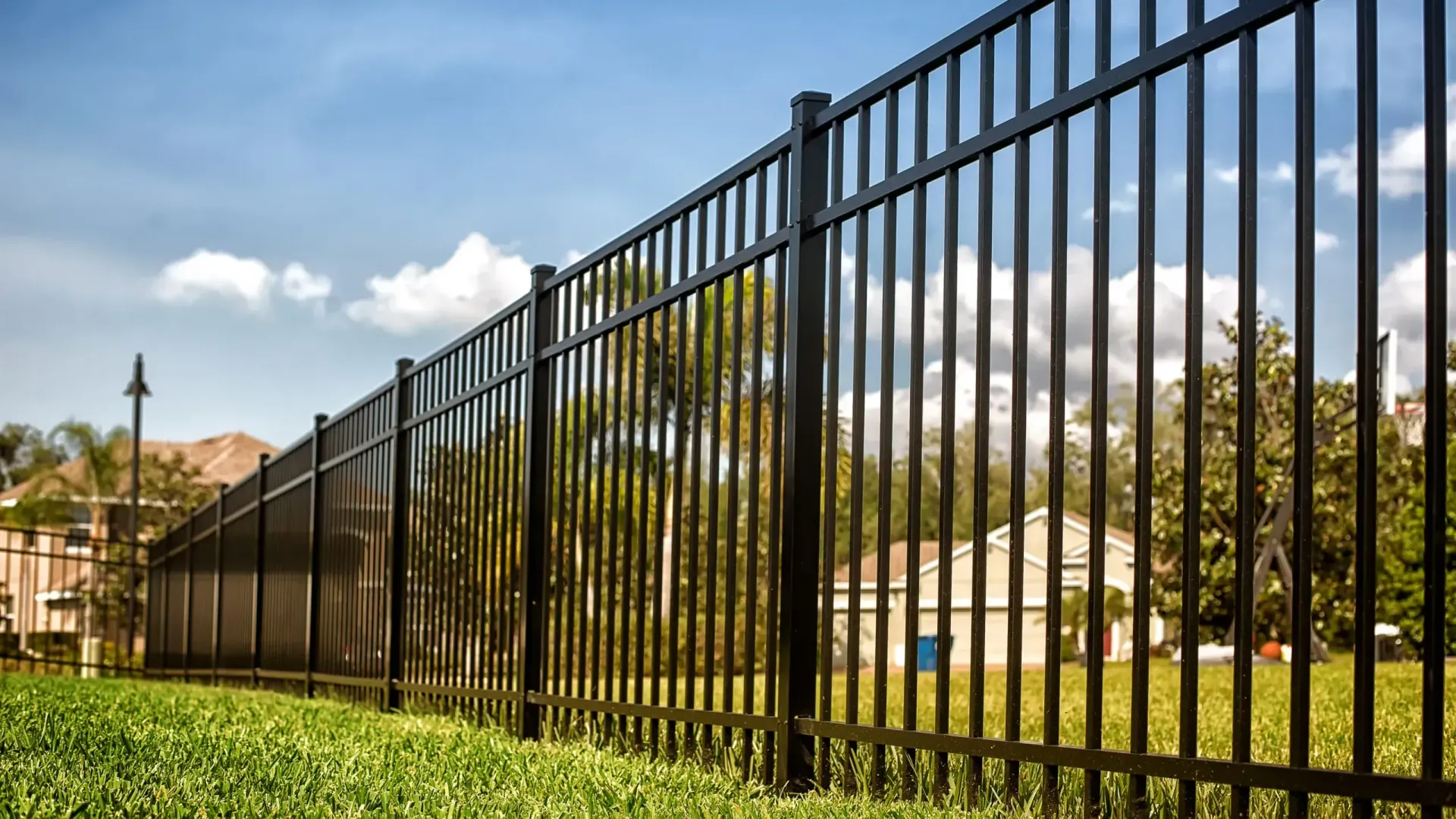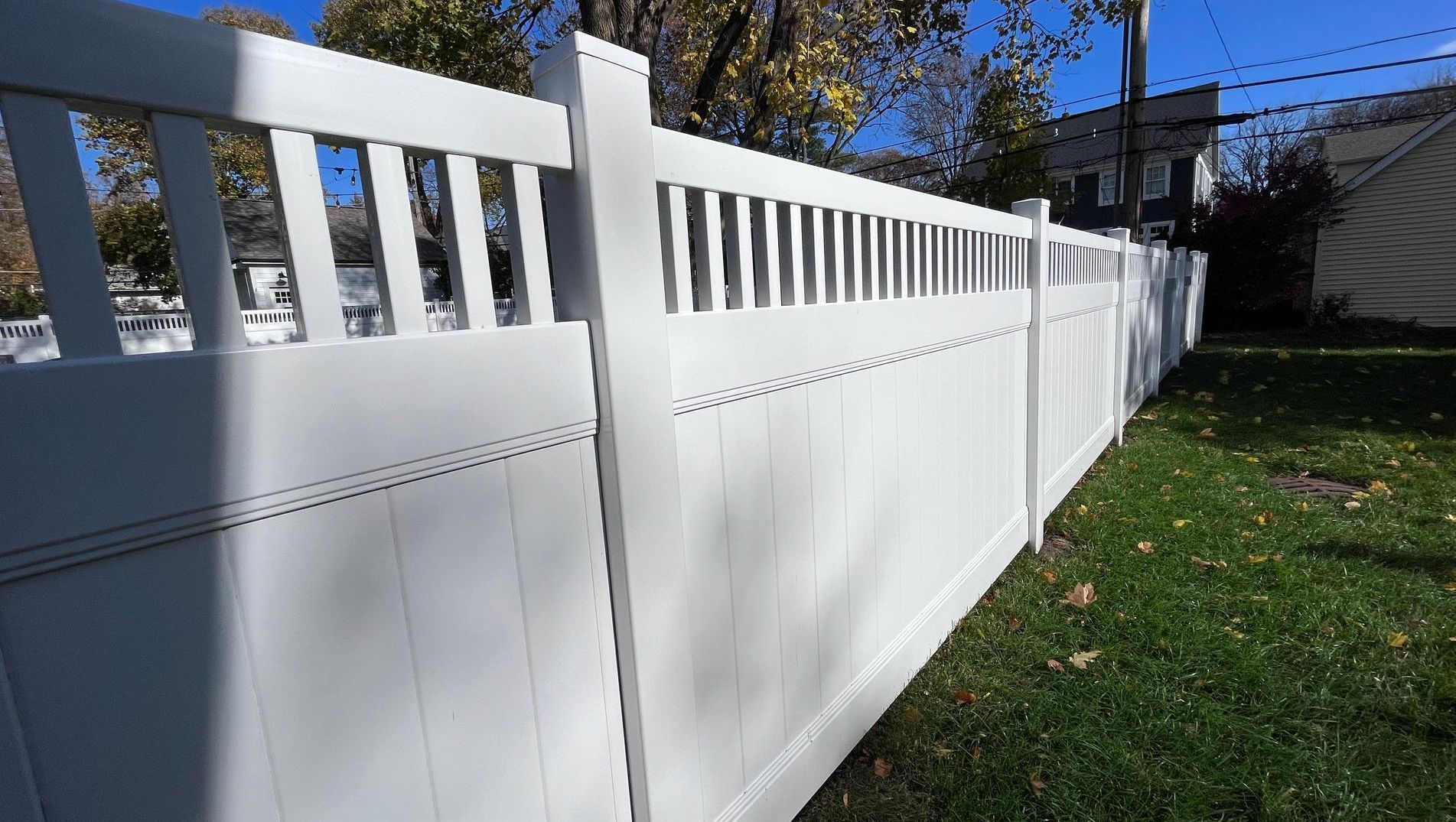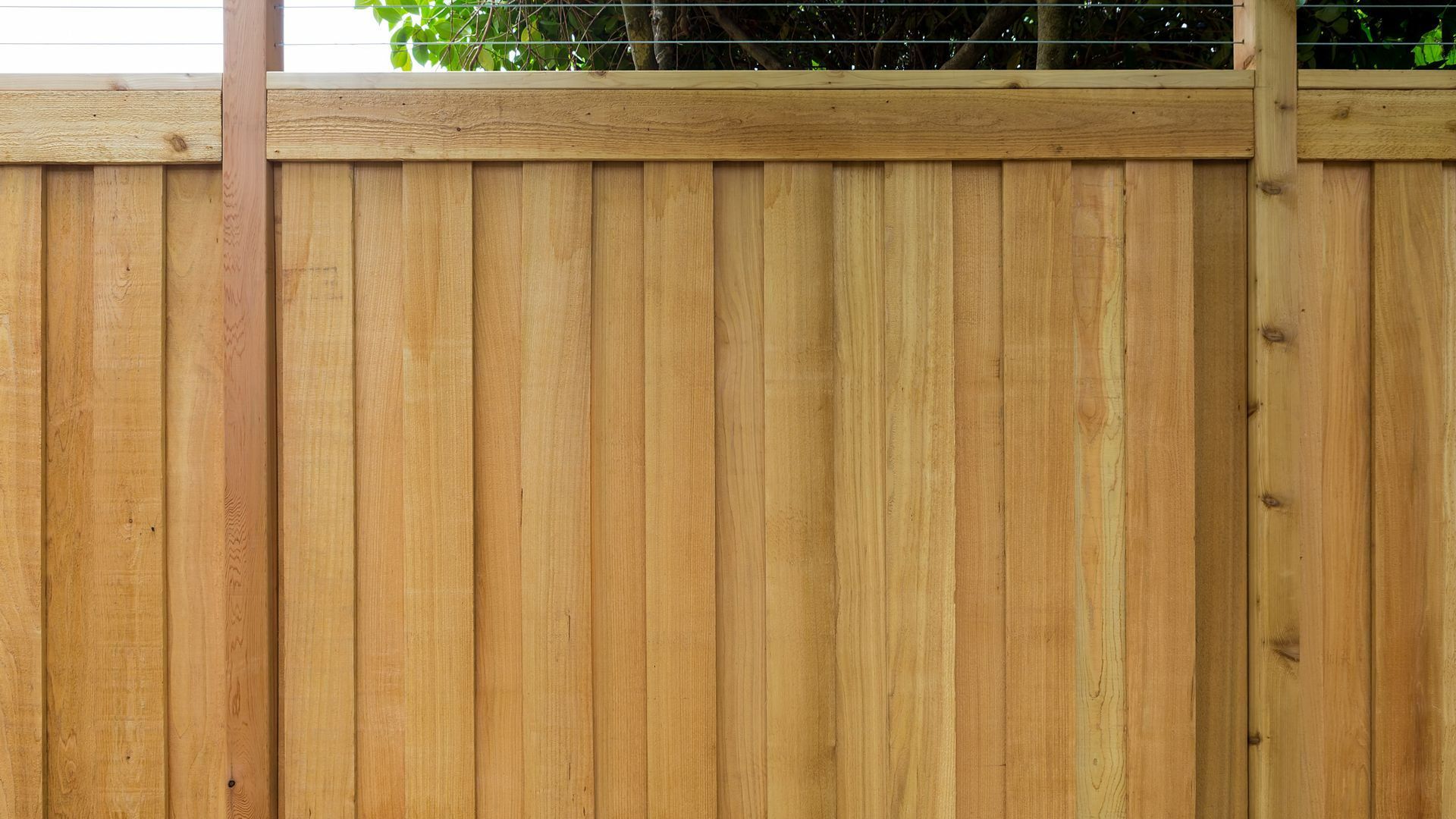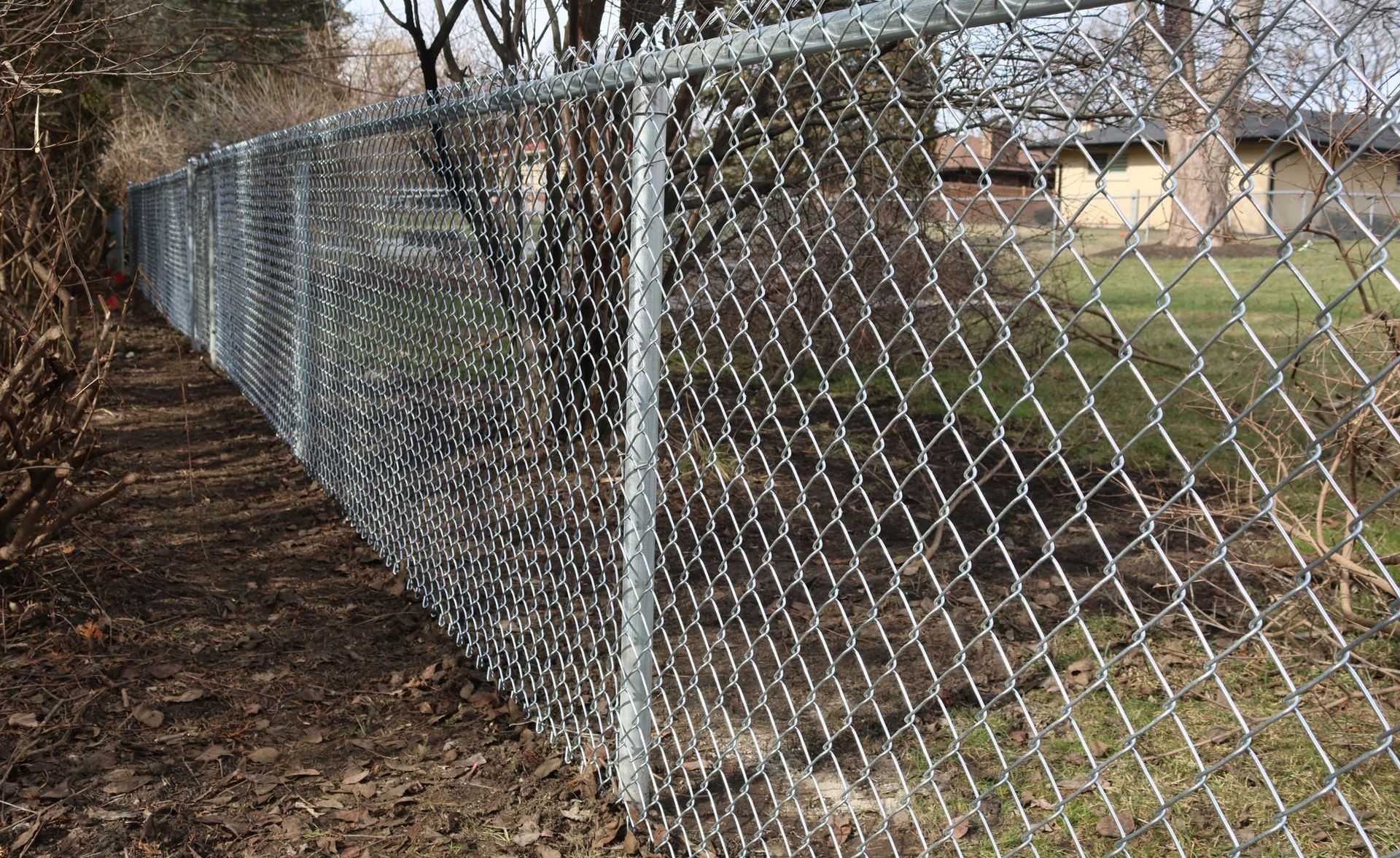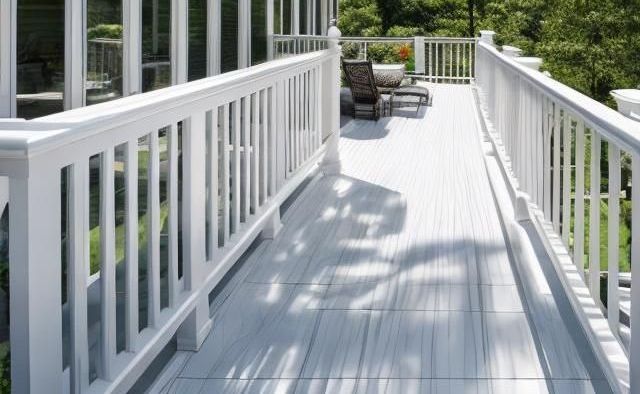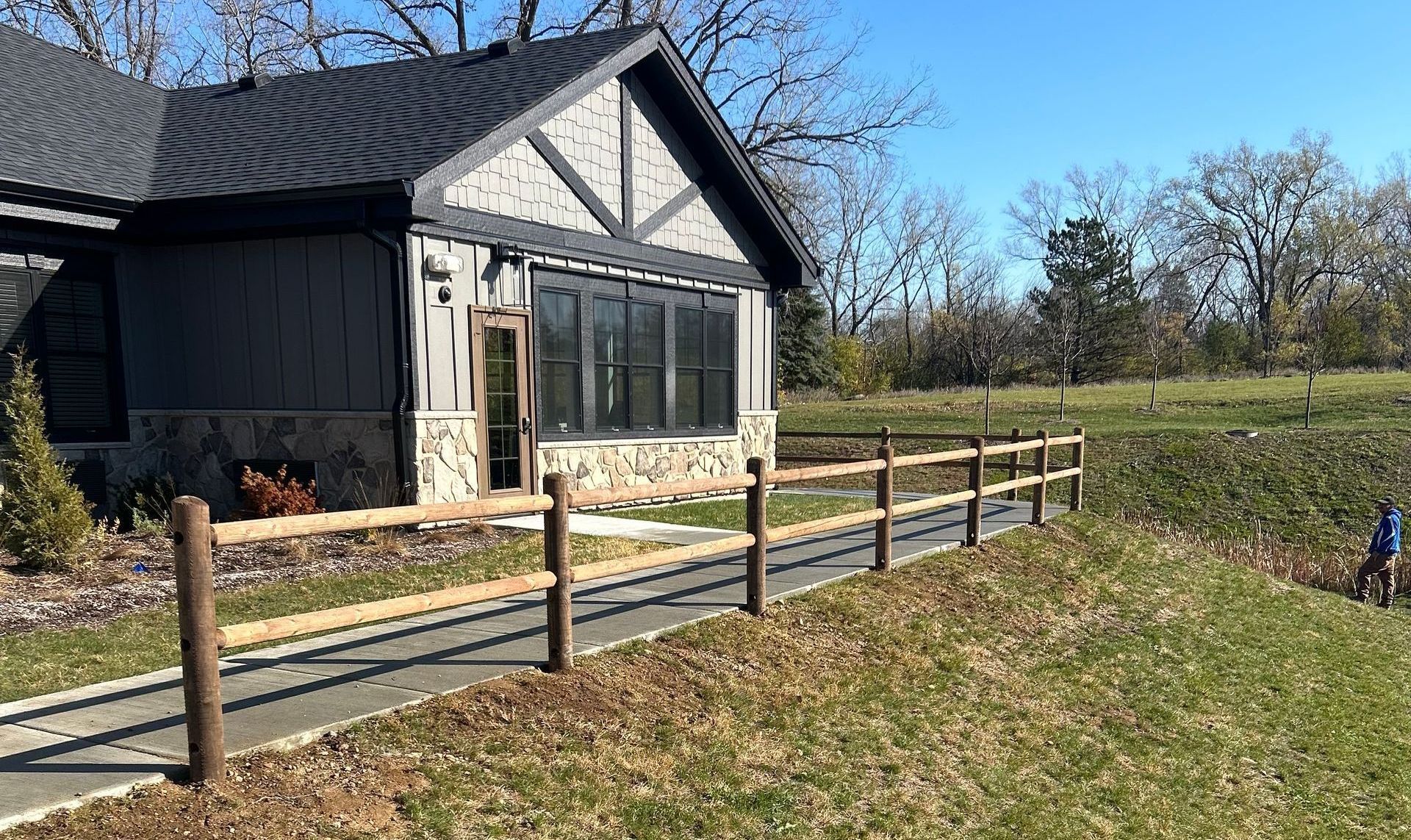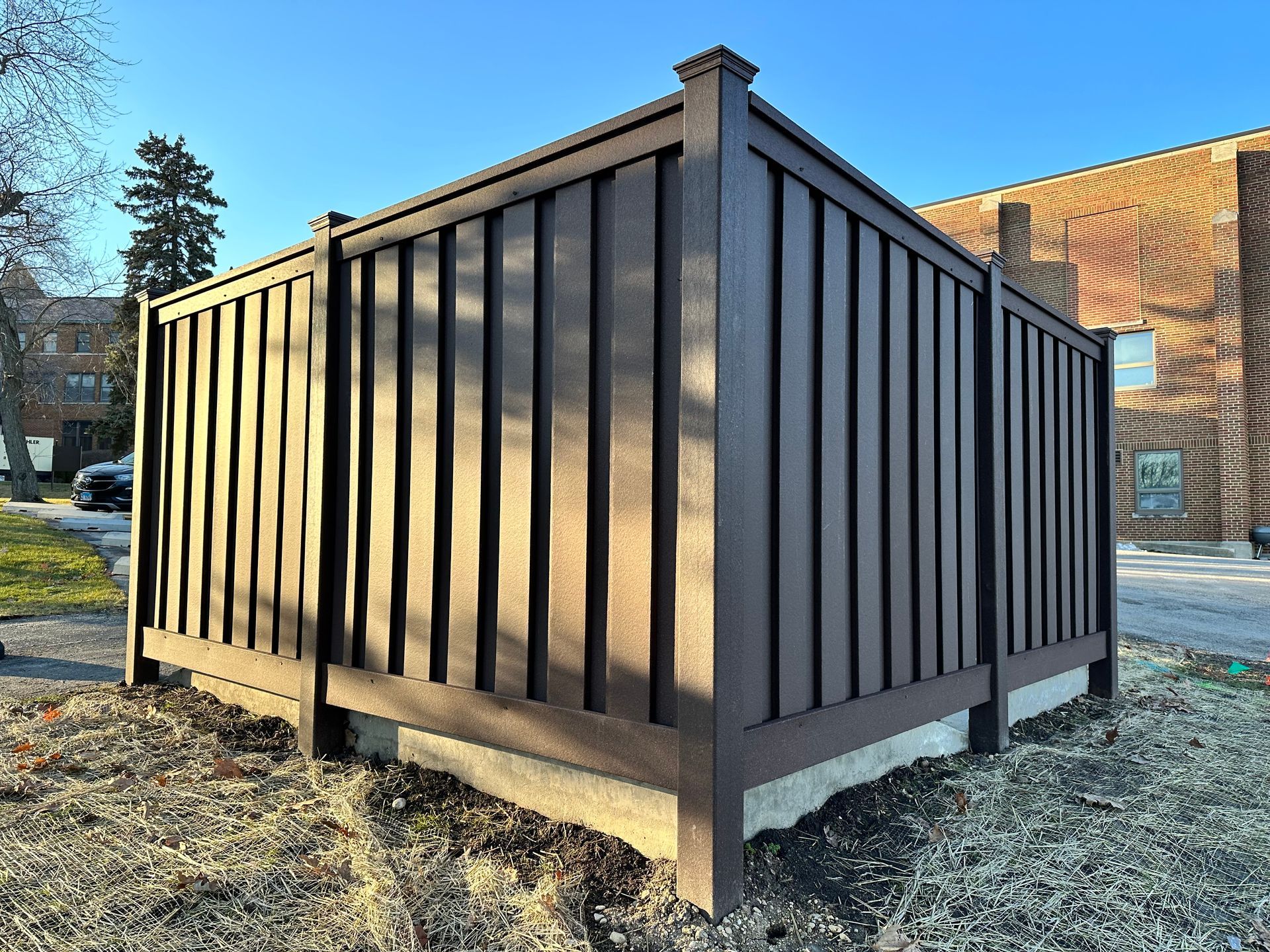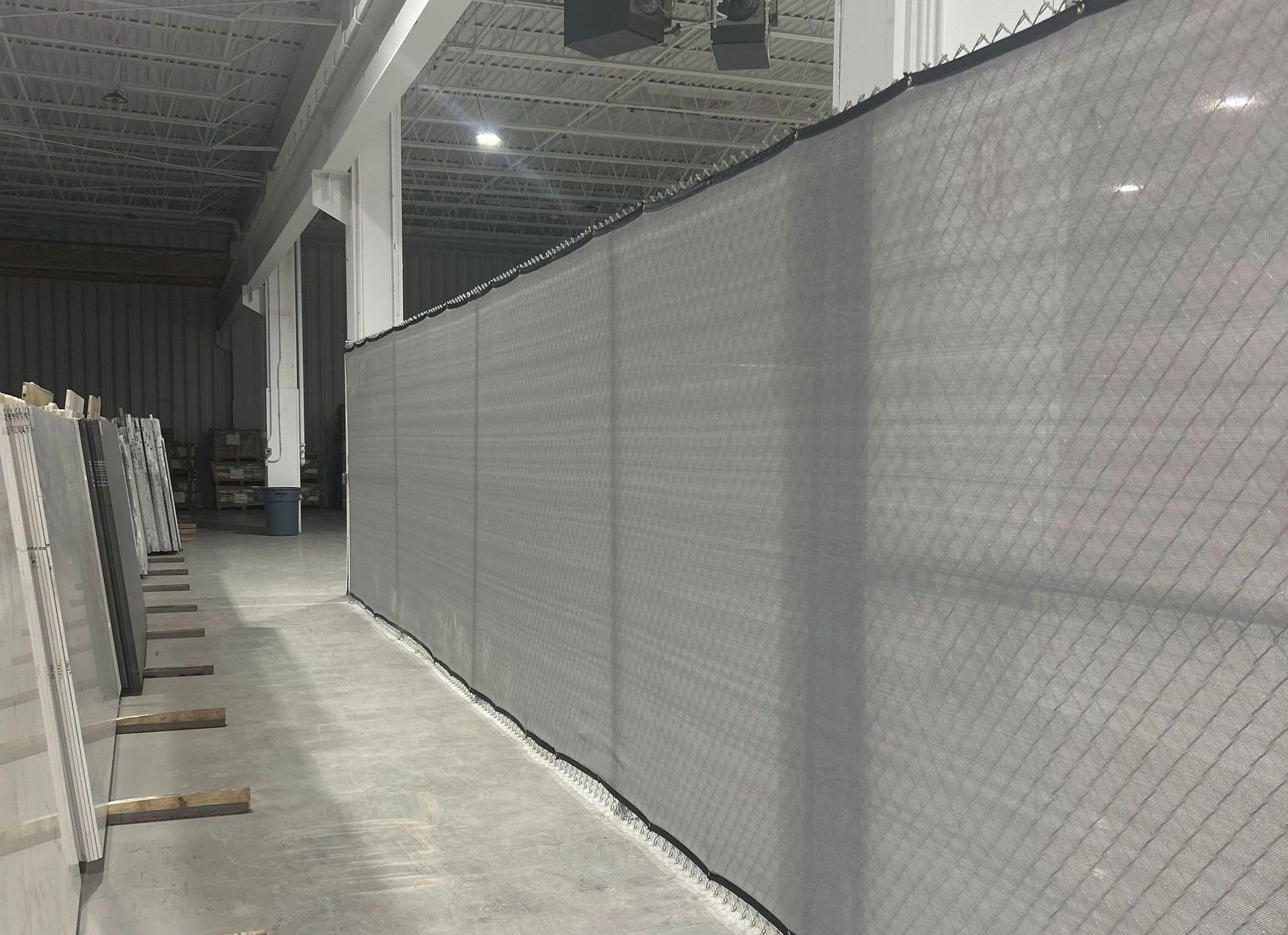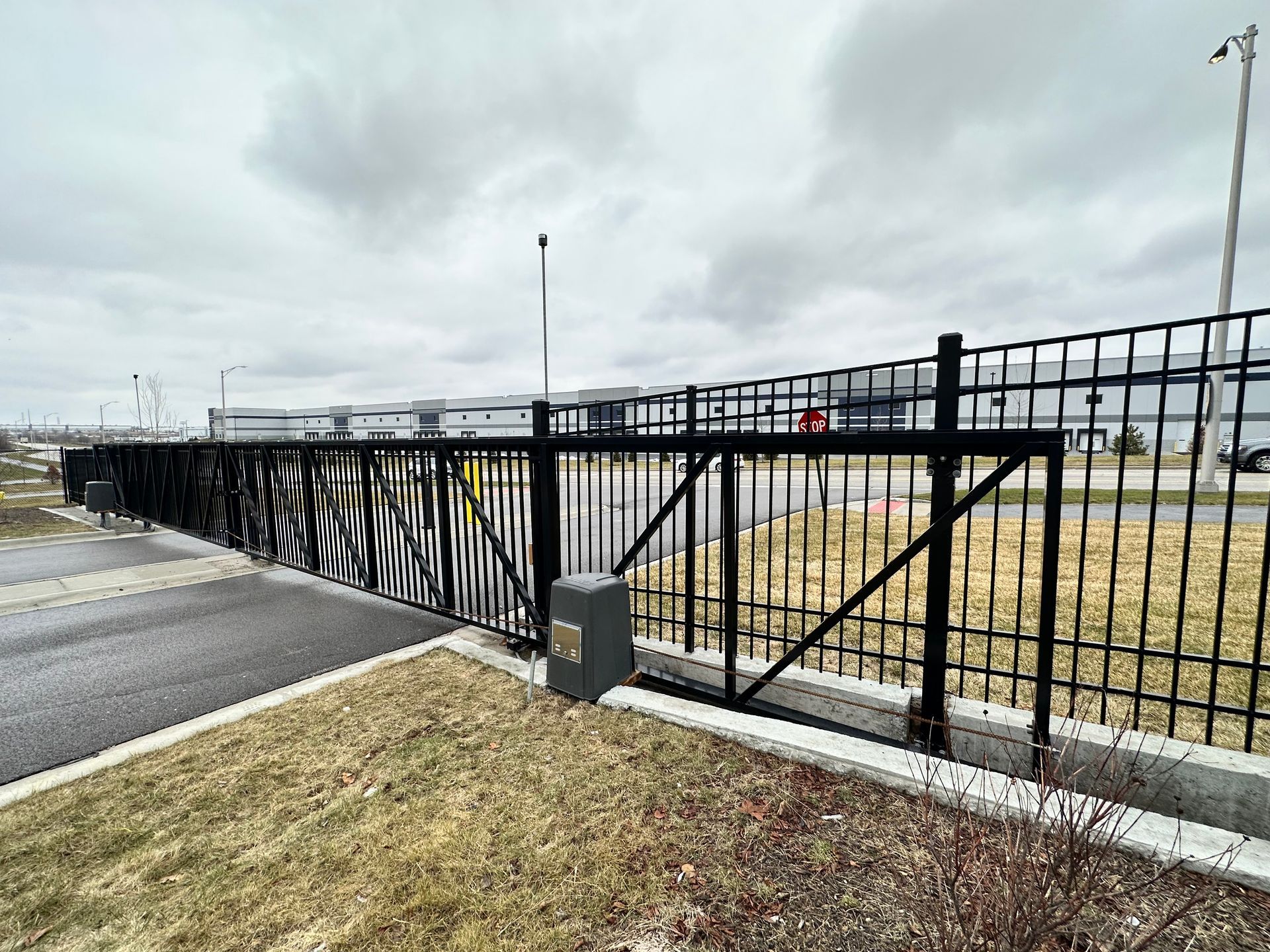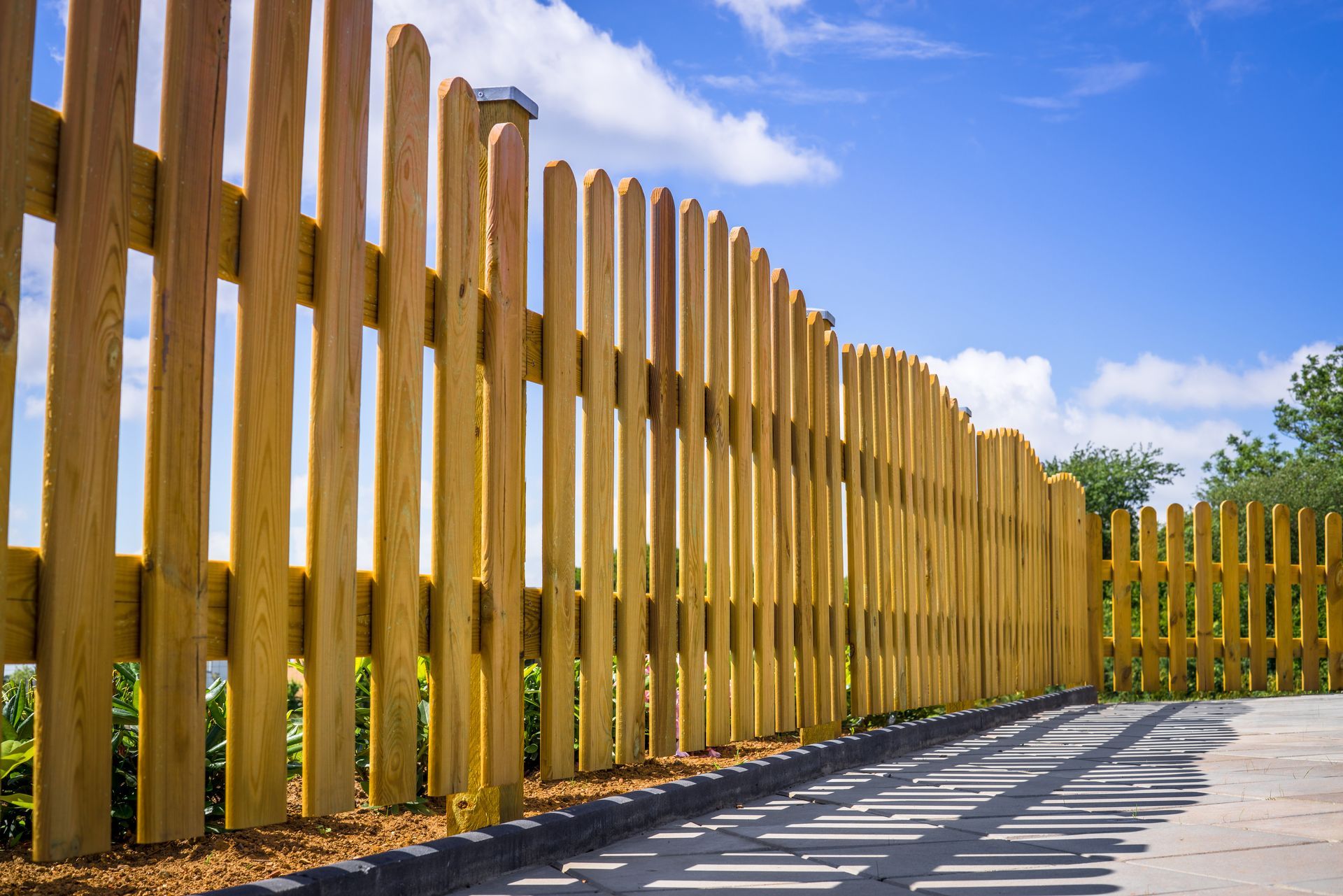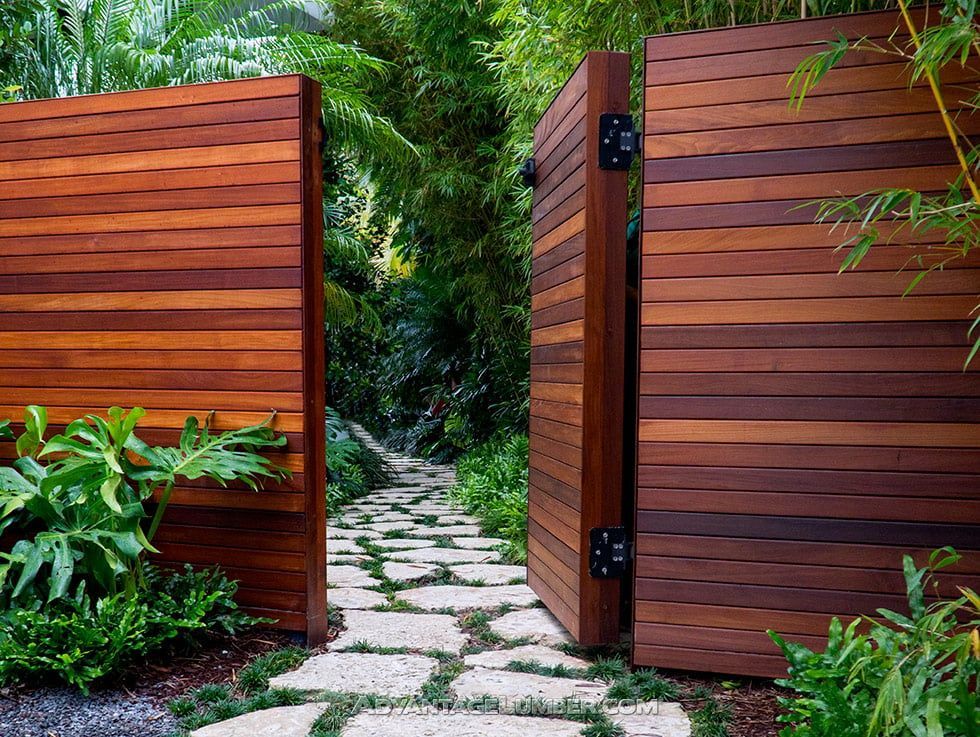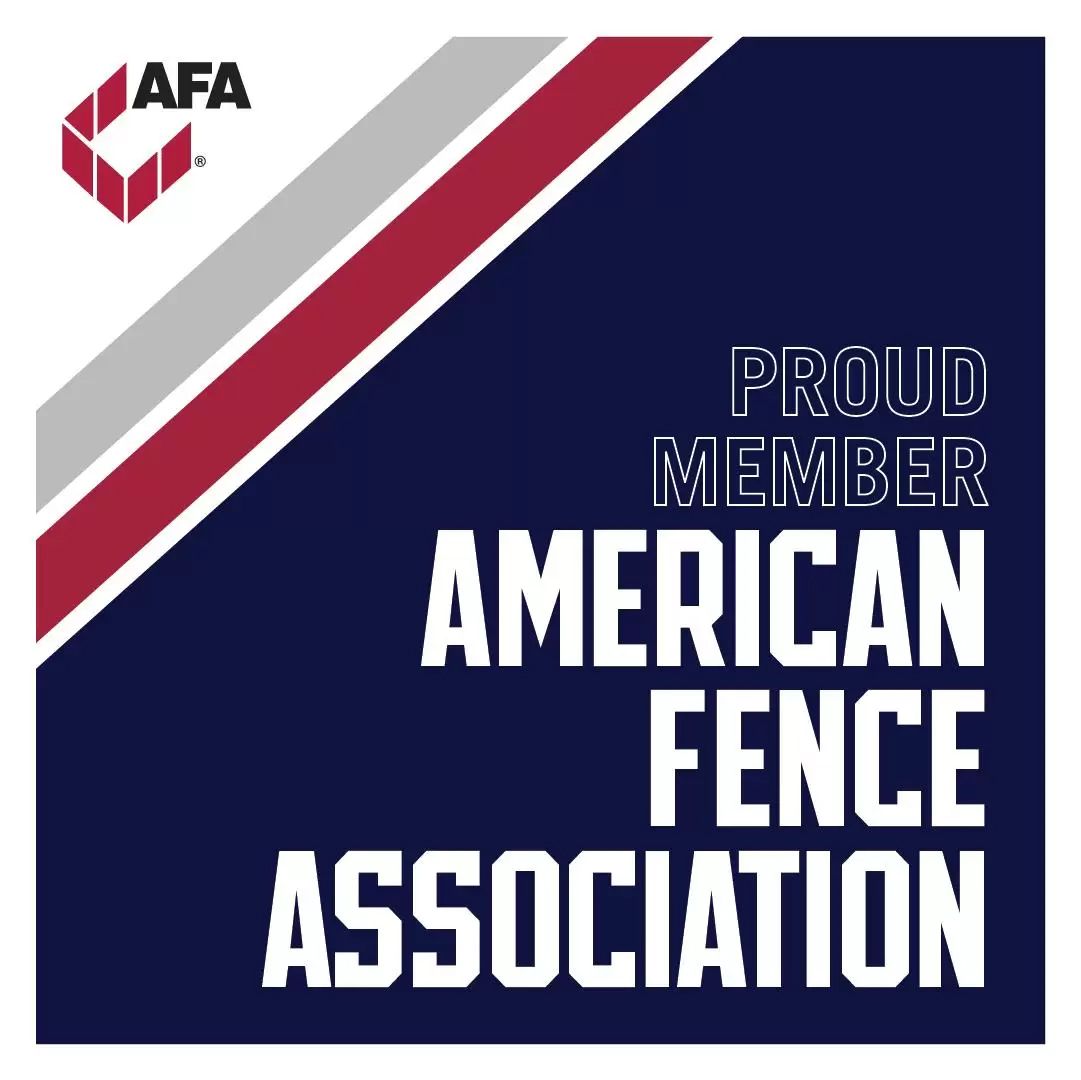The History of Fencing
Fence installation has been around a very long time, but where did it start?

Before we get into the history of fence, let's start with a definition...
A fence is a structure made of wood, metal, or other materials that is used to enclose an area or mark a boundary. It serves various purposes, including providing security, privacy, and safety. Fences come in different shapes, sizes, and designs, ranging from simple picket fences to tall chain-link fences. They can be found in residential areas, farms, parks, and commercial properties. Fences can also be decorative, enhancing the aesthetics of a property. Additionally, they can serve as a barrier to keep animals or children within a designated space. Overall, fences play a crucial role in defining and protecting spaces in our everyday lives.
The history of fence installation dates back thousands of years, with the practice evolving alongside human civilization. Fences have served a variety of purposes throughout history, including demarcating boundaries, providing security, controlling livestock, and enhancing privacy. The development of fence installation techniques has been influenced by technological advancements, societal needs, and cultural preferences. The history of fences is long and often complex, but here we break it down simply for you.
Ancient Times:
- The earliest known fences were simple barriers constructed using natural materials such as branches, stones, and shrubs. These primitive fences were likely created for protection from wild animals and to mark territory.
- Ancient civilizations, such as the Egyptians, Greeks, and Romans, used fences for various purposes. The Romans, in particular, utilized fences as a means of delineating property boundaries and controlling livestock.
Medieval and Renaissance Periods:
- During medieval times, fences became more elaborate, especially in Europe. Wooden fences, often constructed from logs or planks, were used to enclose fields and pastures.
- In the Renaissance era, ornamental fencing gained popularity among the wealthy. Elaborate wrought iron fences adorned estates and gardens, showcasing craftsmanship and artistic design.
Colonial America:
- In the American colonies, early settlers used fences primarily for agricultural purposes. Split rail fences, made from logs or timber, were common and provided a straightforward method for enclosing farmland.
- Stone fences, a practice brought over by European settlers, were prevalent in regions where suitable stone materials were abundant.
19th Century:
- The 19th century saw advancements in fencing materials and construction techniques. Wire fencing, often referred to as "barbed wire" or "stockade wire," revolutionized the industry. This innovation was particularly significant in the American West, where it played a crucial role in the expansion of ranching.
20th Century:
- The 20th century brought further innovations, including the use of synthetic materials such as vinyl and composite materials for fencing. These materials offered durability and low maintenance, contributing to their widespread adoption in residential and commercial settings.
- Chain-link fencing gained popularity for its affordability, versatility, and durability. It became a standard choice for a variety of applications, from residential properties to industrial sites.
Contemporary Times:
- Today, fence installation encompasses a wide range of materials, styles, and purposes. Common types of fences include wood, metal, vinyl, chain-link, and composite materials, each serving different needs and aesthetic preferences.
- Modern technology has also played a role in fence automation and security. Electric fences, access control systems, and smart fencing solutions are examples of how technology has been integrated into contemporary fence installations.
Throughout history, the evolution of fence installation has been driven by the need for security, property delineation, livestock control, and aesthetics. As societies and technologies continue to advance, the fencing industry adapts to incorporate new materials and construction methods while maintaining the fundamental roles that fences play in various aspects of human life.
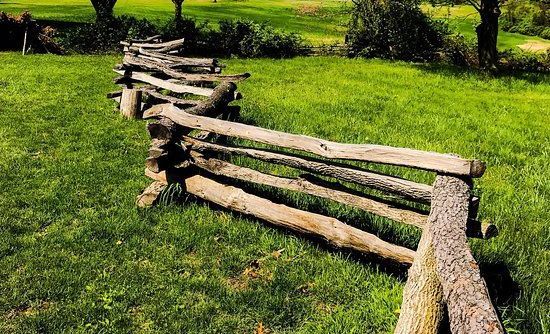
The word "fence" comes up dozens of times in the Bible, and for good reason. Fences have played a pivotal role in dividing up property and marking boundaries for thousands of years.
The origin of the word “fence” comes from the word fens, a short word for defense, or protection. The Oxford Dictionary defines it as “a structure serving as a barrier, boundary or enclosure, usually made of posts or stakes joined together by boards, wire, or rails."

Ancient Fencing
Ancient civilizations employed various types of fences, often using locally available materials and construction techniques. While the specific names of these ancient fence types may vary depending on the region and culture, here are some general categories and examples:
Wattle Fencing:
- Description: Wattle fencing is one of the oldest types of fencing, constructed by weaving branches or thin strips of wood between upright posts.
- Ancient Use: Wattle fencing was used by many ancient cultures, including the Egyptians and Romans, for creating barriers and enclosures.
Hedgerows:
- Description: Hedgerows involve planting shrubs or trees in a line to form a natural barrier. Over time, these plants grow and intertwine, creating a dense and effective boundary.
- Ancient Use: Hedgerows have been utilized in various ancient agricultural societies, providing boundaries for fields and pastures.
Palisade Fencing:
- Description: Palisade fencing involves erecting vertical posts in the ground and connecting them with horizontal beams or planks. This creates a sturdy and imposing barrier.
- Ancient Use: Palisade fencing was commonly used for defensive purposes around settlements, forts, and other important structures in ancient times.
Dry Stone Walls:
- Description: Dry stone walls are constructed by stacking stones without the use of mortar. The weight and arrangement of stones create a stable and durable fence.
- Ancient Use: Dry stone walls were prevalent in regions where suitable stones were abundant, such as in parts of Europe and the Middle East.
Thorn Hedges:
- Description: Thorn hedges involve the planting of thorny bushes or shrubs in a line to create a natural, defensive barrier.
- Ancient Use: Thorn hedges were used for both agricultural and defensive purposes in various ancient societies.
Bamboo Fencing:
- Description: Bamboo fencing is created by bundling together bamboo stalks to form a barrier. It is lightweight, flexible, and sustainable.
- Ancient Use: Bamboo fencing has a long history in Asian cultures, where bamboo was plentiful. It was used for property delineation and agricultural purposes.
Paling Fences:
- Description: Paling fences consist of vertical boards or palings attached to horizontal rails. This type of fencing provides both privacy and a visually appealing barrier.
- Ancient Use: Paling fences have been used in various cultures, evolving over time with different materials and construction techniques.
Brushwood Fencing:
- Description: Brushwood fencing is constructed using branches or twigs bound together to form a dense and natural barrier.
- Ancient Use: Brushwood fences were used by indigenous cultures in different parts of the world for creating enclosures and boundaries.
While these terms describe general categories, it's important to note that the specific names and variations of ancient-style fences may differ based on the geographical region and cultural context. Ancient people often adapted their fencing techniques to suit the available materials and environmental conditions.
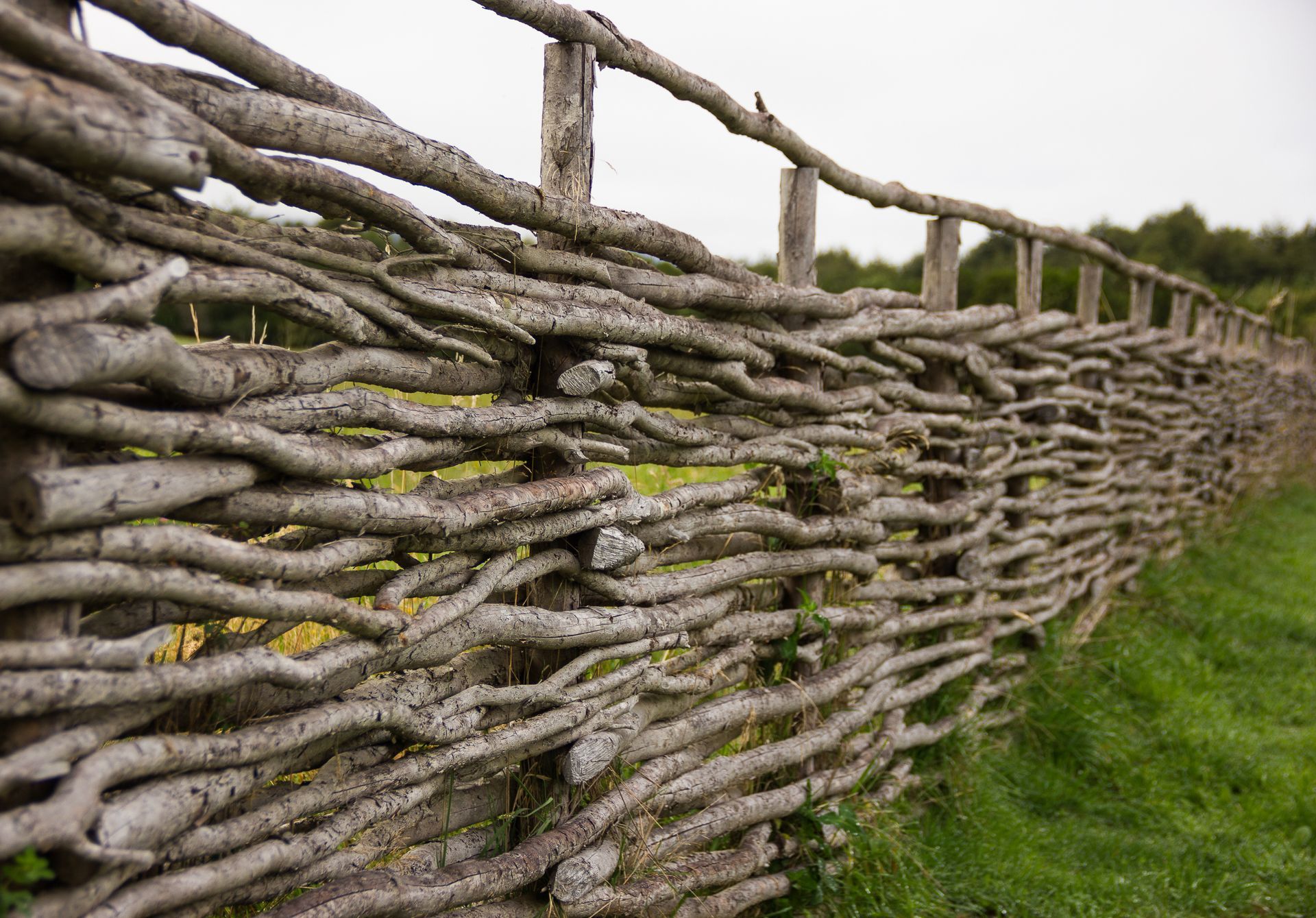
History of American Fencing
During the colonial period in America, the types of fences installed by colonists were influenced by the materials available, the needs of the community, and the local environment. The following are some common types of fences that were prevalent among the colonists:
- Description: Split rail fences, also known as log fences or zigzag fences, are constructed using horizontal rails that are split from logs. These rails are typically stacked in a zigzag pattern between posts.
- Colonial Use: Split rail fences were widely used by early American colonists to enclose fields and pastures. They were relatively easy to construct using simple tools and readily available wood.
Post-and-Rail Fences:
- Description: Post-and-rail fences consist of vertical posts with horizontal rails connecting them. The number of rails can vary, and the spacing between them is typically wide.
- Colonial Use: Similar to split rail fences, post-and-rail fences were commonly used for agricultural purposes, marking property boundaries and containing livestock.
Stone Fences:
- Description: Stone fences involve stacking stones without mortar to create a barrier. The height and thickness of the wall depend on the availability of stones.
- Colonial Use: In regions where suitable stones were abundant, such as New England, colonists constructed stone fences for agricultural purposes and as property boundaries.
Picket Fences:
- Description: Picket fences consist of upright pickets (vertical boards) attached to horizontal rails. The pickets are typically pointed at the top.
- Colonial Use: Picket fences were often used in more settled areas and around homes. They served decorative and ornamental purposes while providing a level of containment.
Hedgerows:
- Description: Hedgerows involve planting shrubs or trees in a line to create a natural, living barrier. Over time, the plants grow and intertwine.
- Colonial Use: Hedgerows were sometimes used for both decorative and functional purposes, providing natural boundaries around gardens and fields.
Wattle Fencing:
- Description: Wattle fencing is constructed by weaving branches or thin strips of wood between upright posts.
- Colonial Use: While more common in earlier periods, wattle fencing continued to be used by some colonists, especially in agricultural settings.
Wooden Paling Fences:
- Description: Paling fences consist of vertical boards or palings attached to horizontal rails. This type of fencing provides both privacy and a visually appealing barrier.
- Colonial Use: Wooden paling fences were used in more settled areas, particularly around homes and gardens, providing a combination of functionality and aesthetics.
The specific type of fence installed varied based on factors such as geography, available resources, and the individual needs of each community. Colonists used these fences not only for practical purposes like agriculture and livestock containment but also to define property lines and establish a sense of order within their settlements.
The need for fencing goes back thousands, if not millions of years. The need for privacy and to mark one's territory and property continues to this day. Fences not only provide a way to mark an area or boundary, but they also serve to provide security from trespassers both human or animal.
The most common types of fencing that is installed today is:
As you can see, we are all about fencing! If you'd like to learn more about our fence installation for your home or business, please contact us today for a free estimate.
Fence Installation Blog
